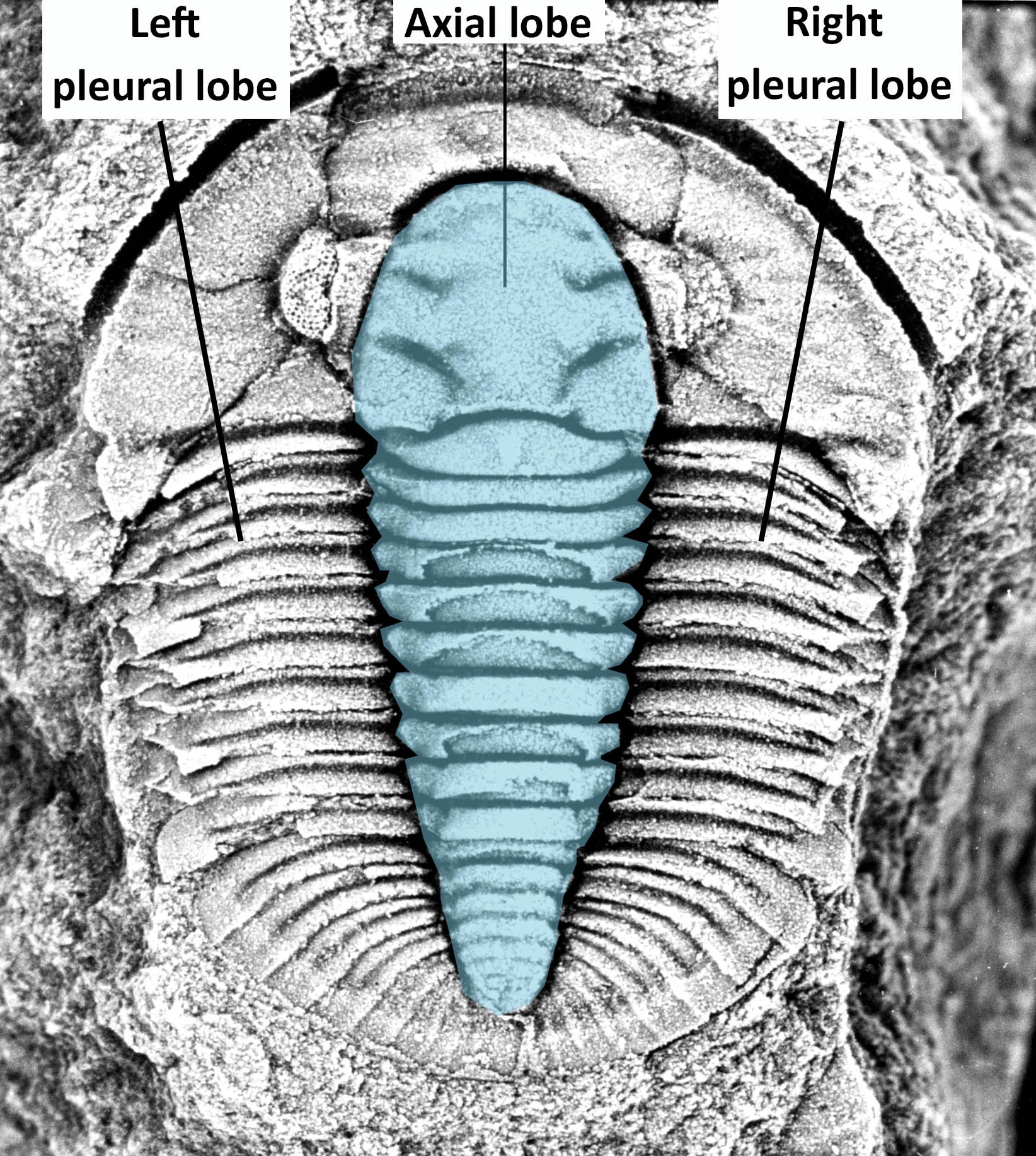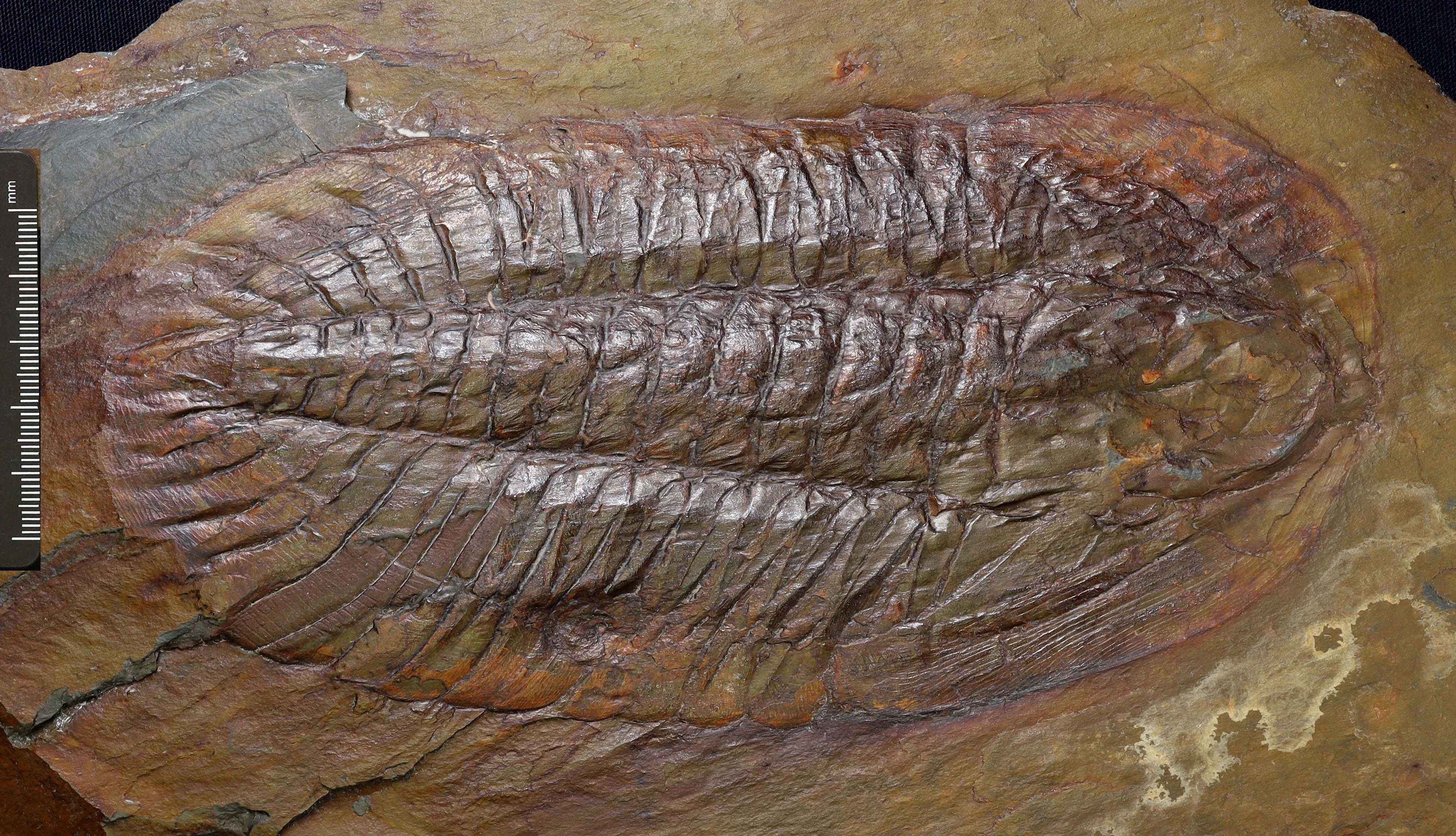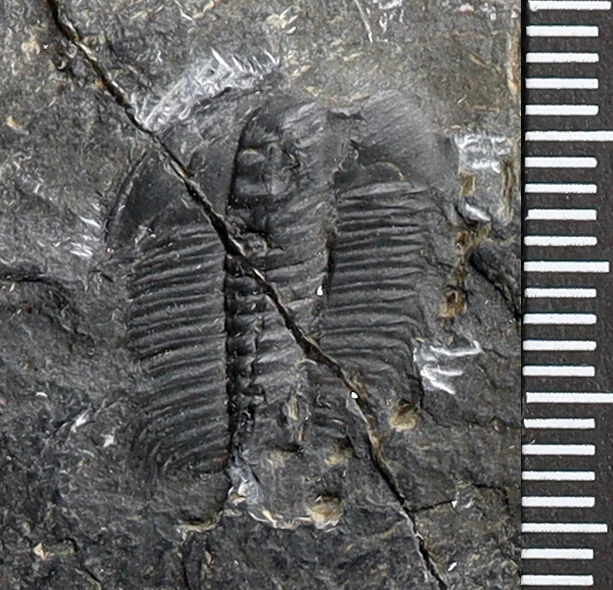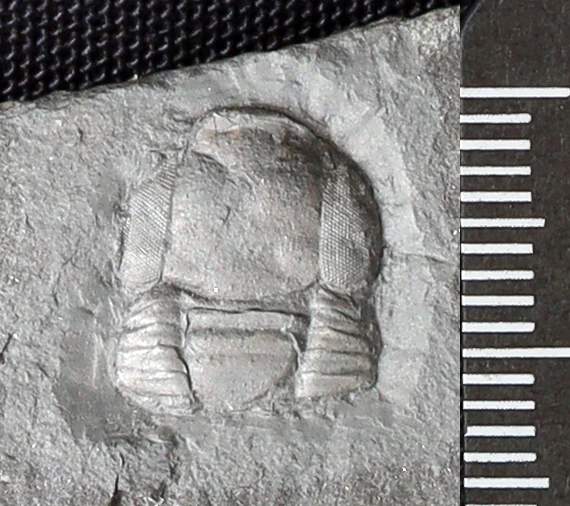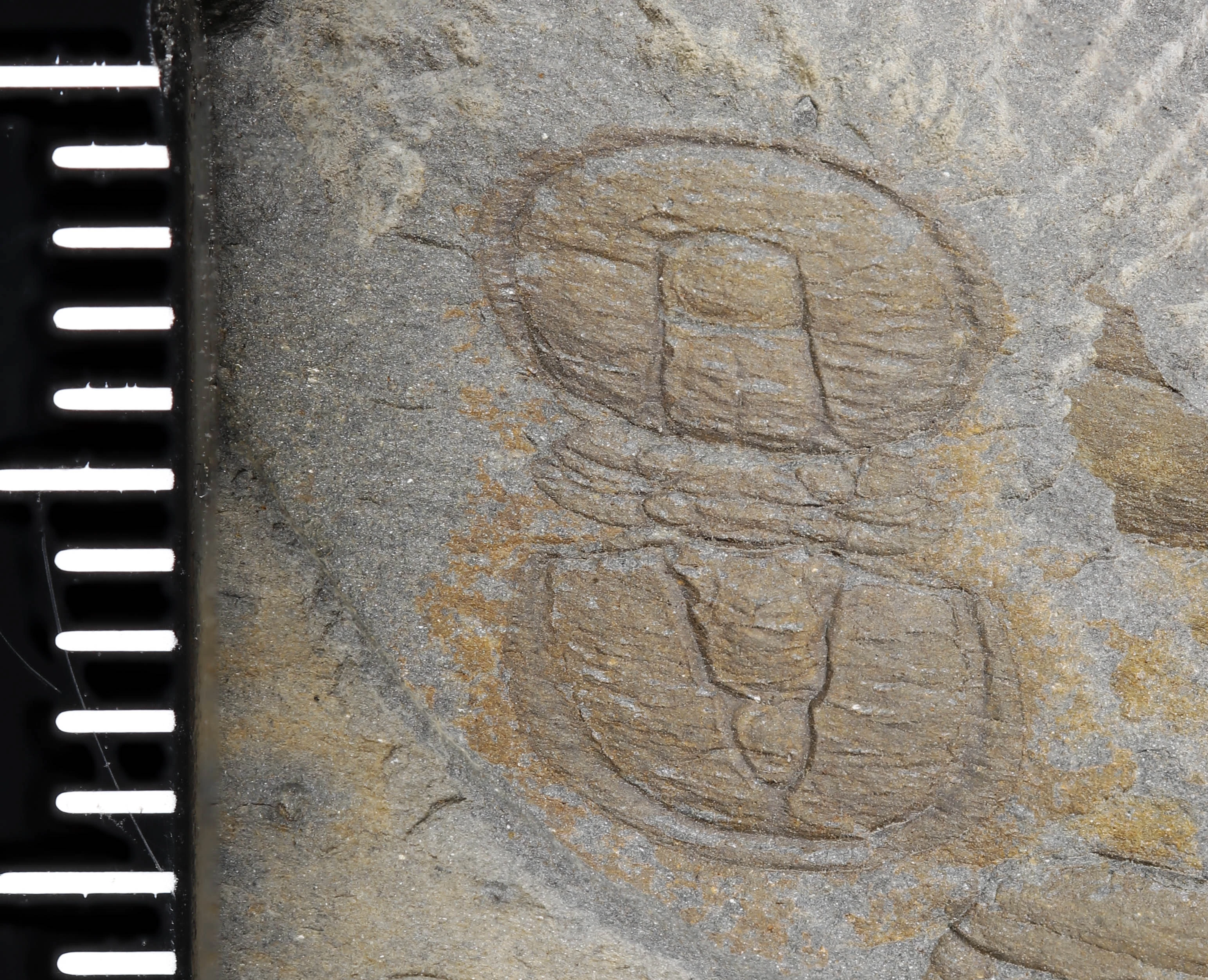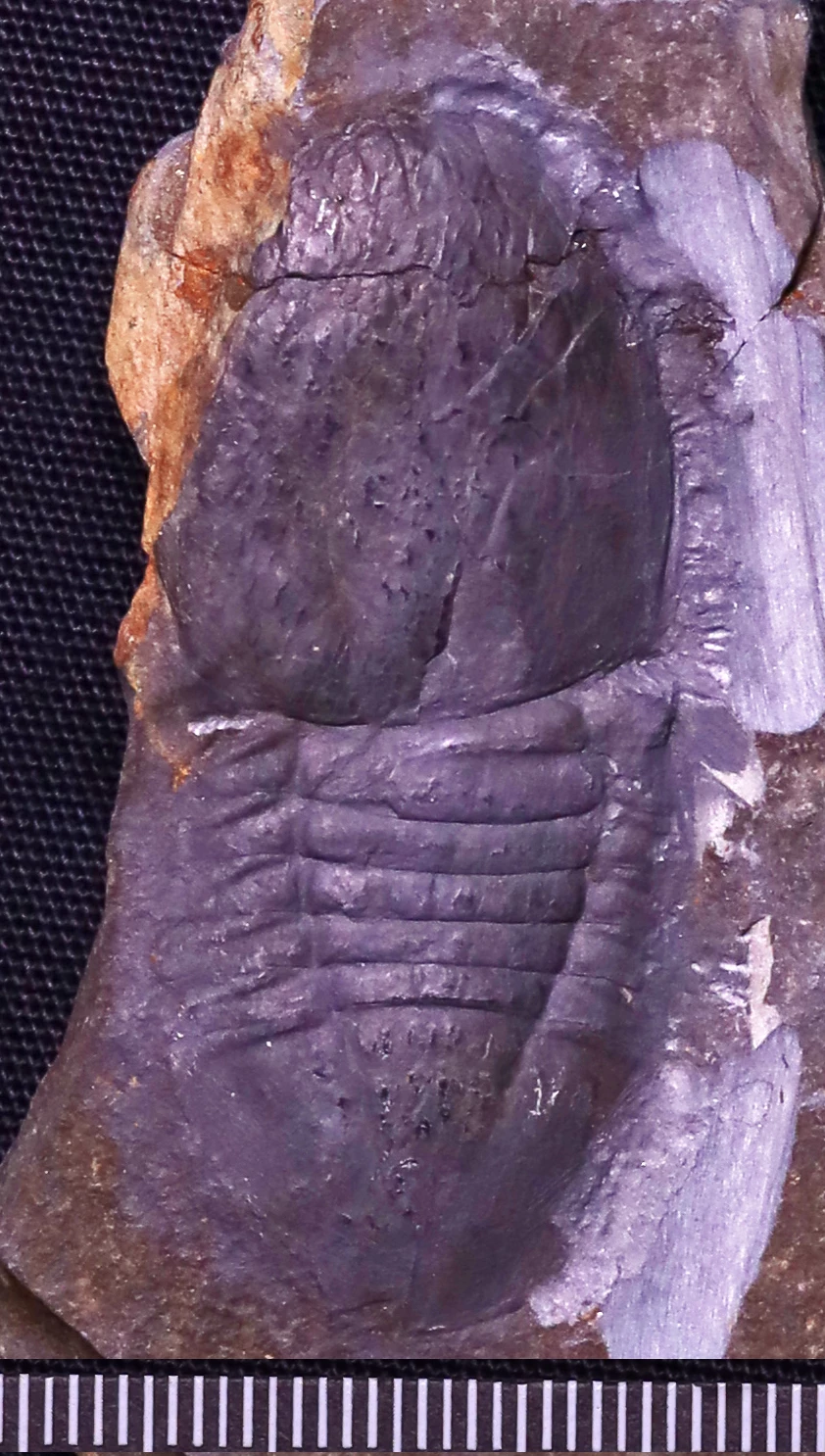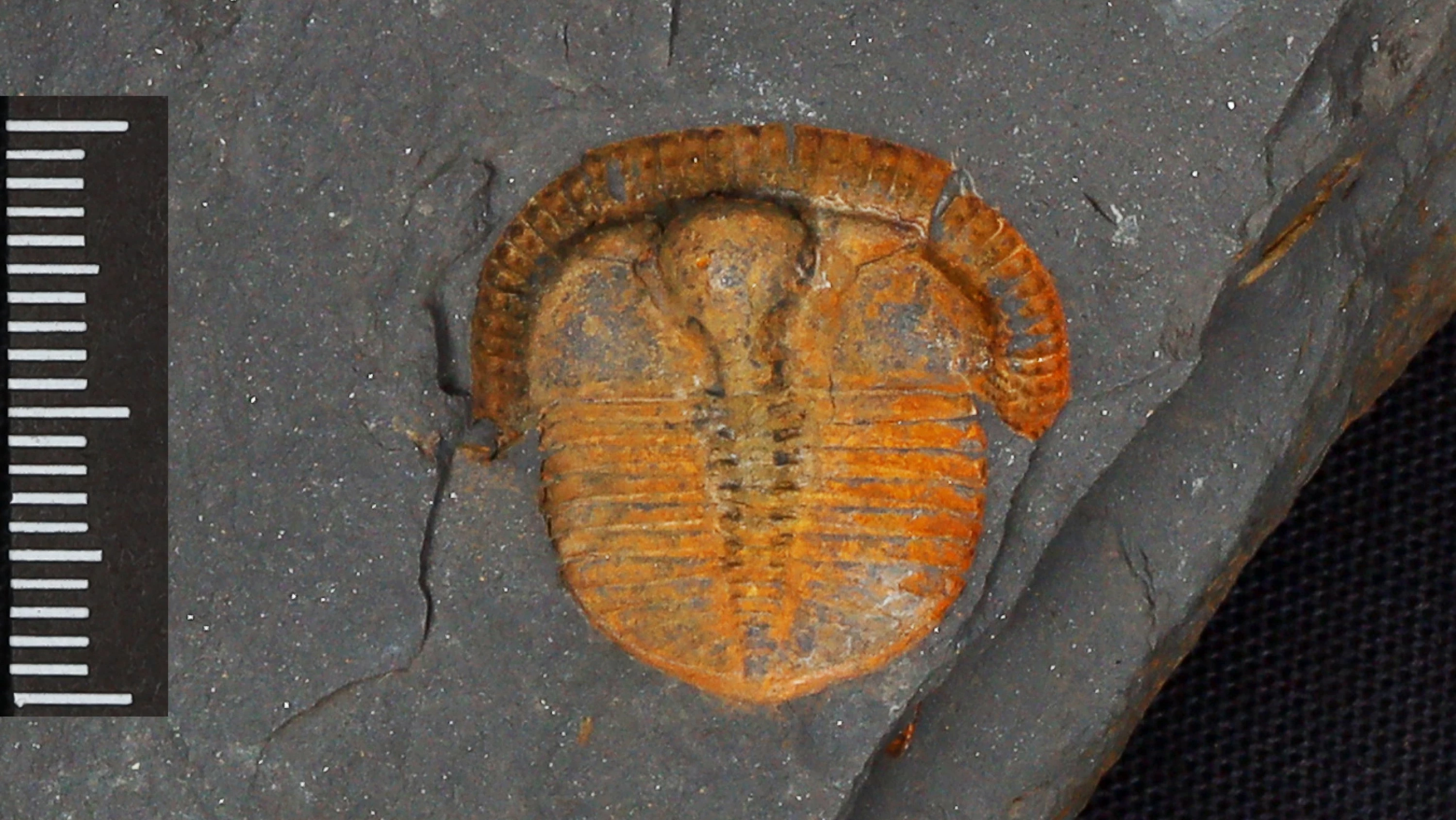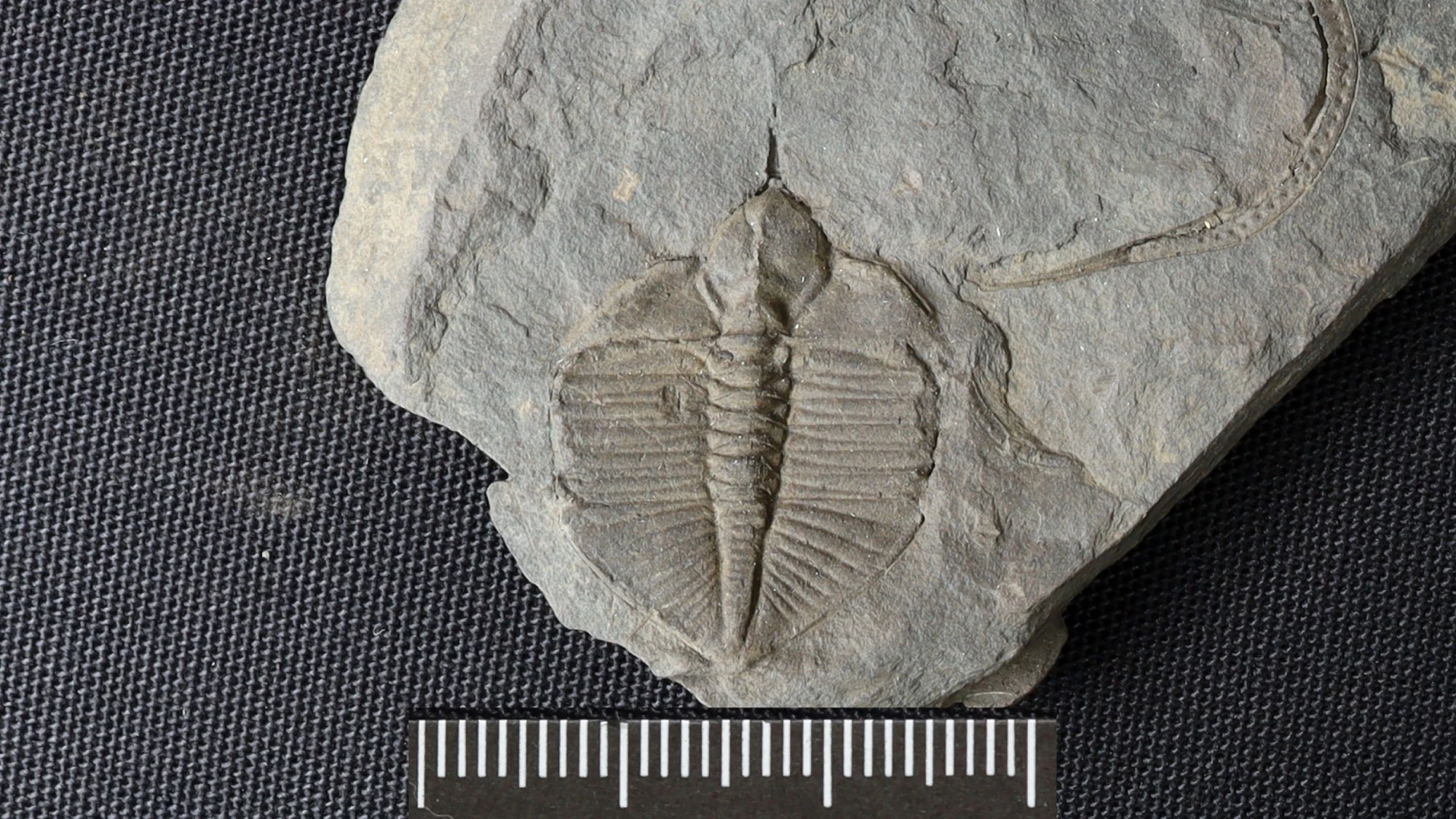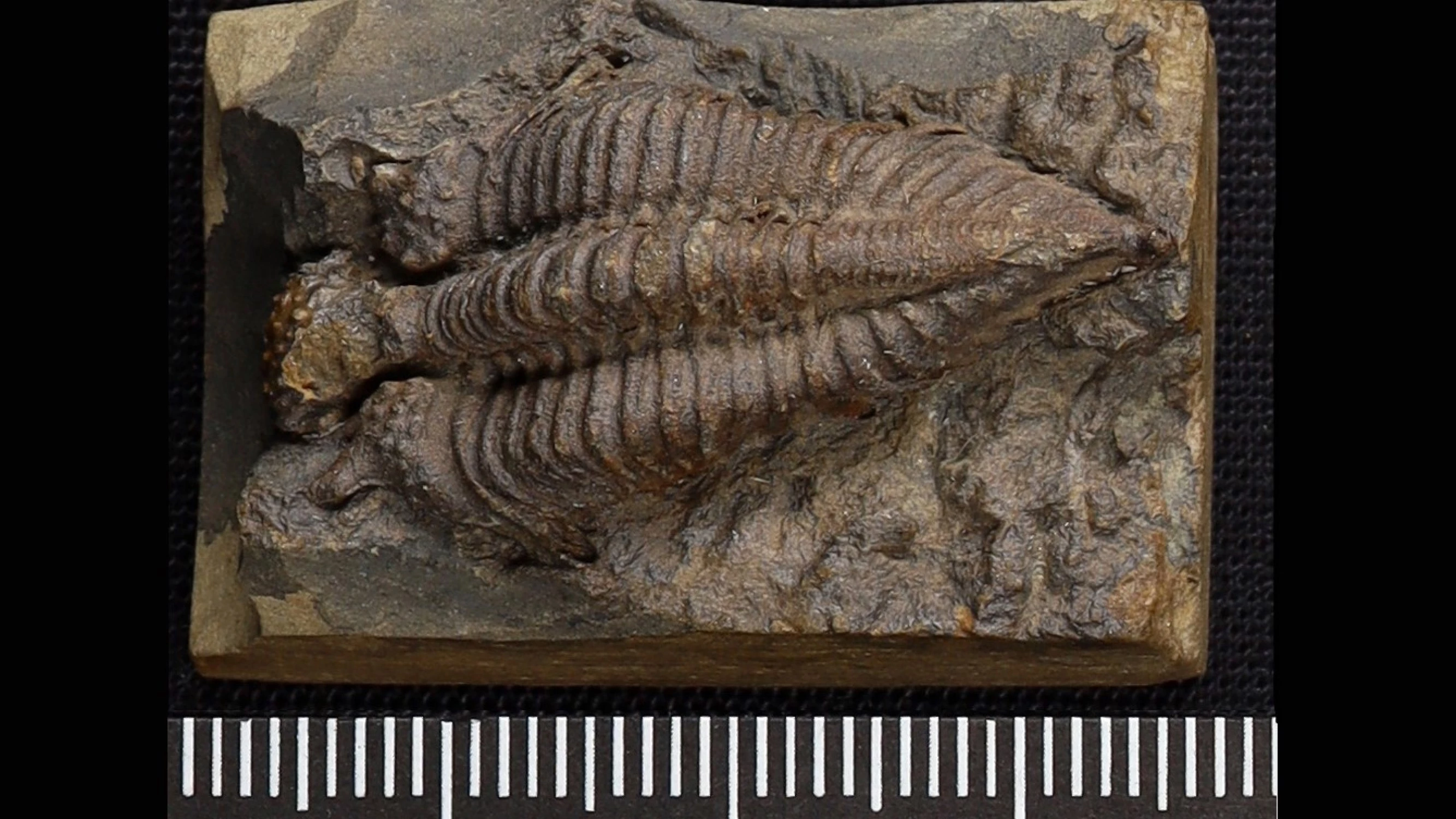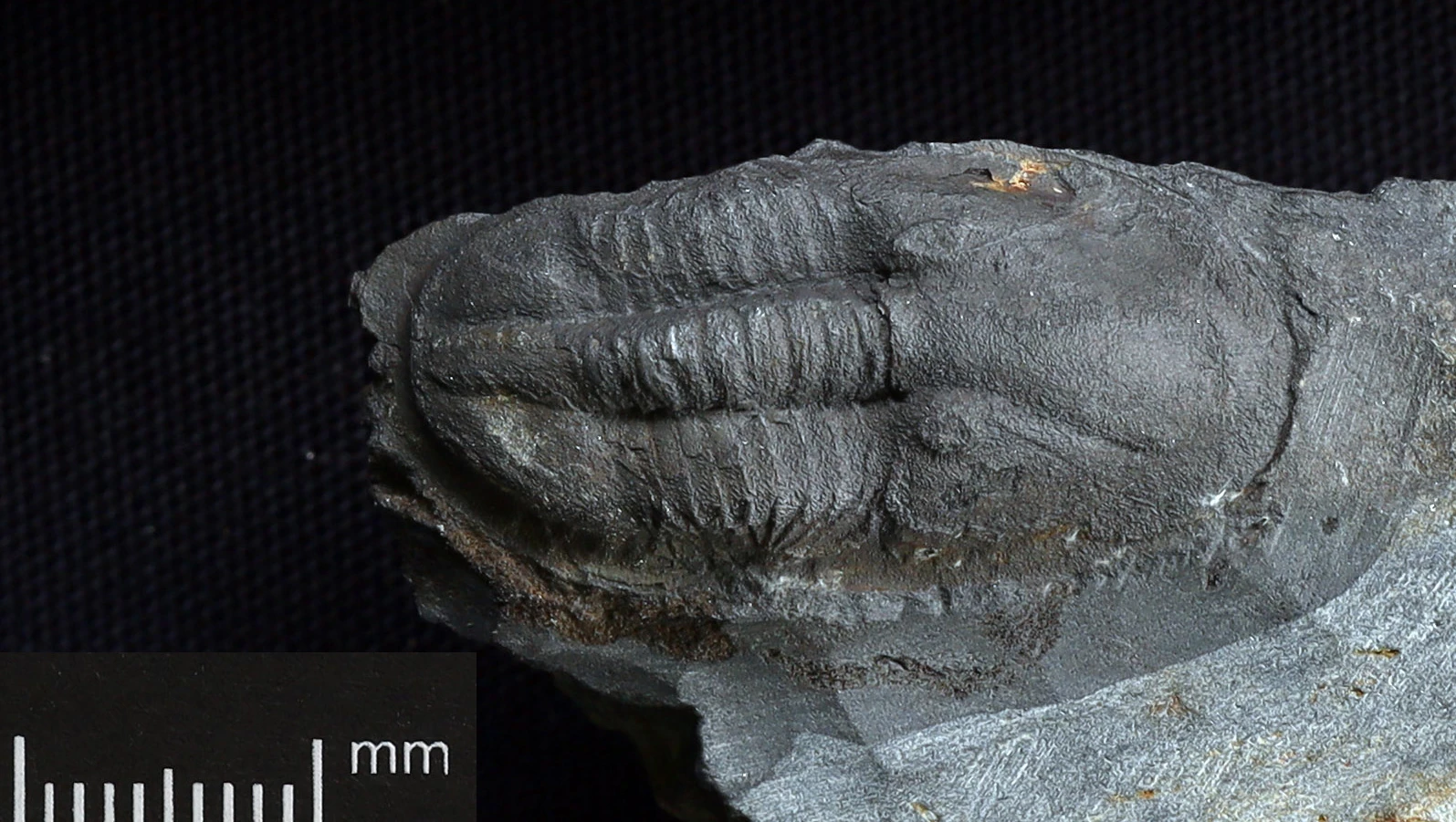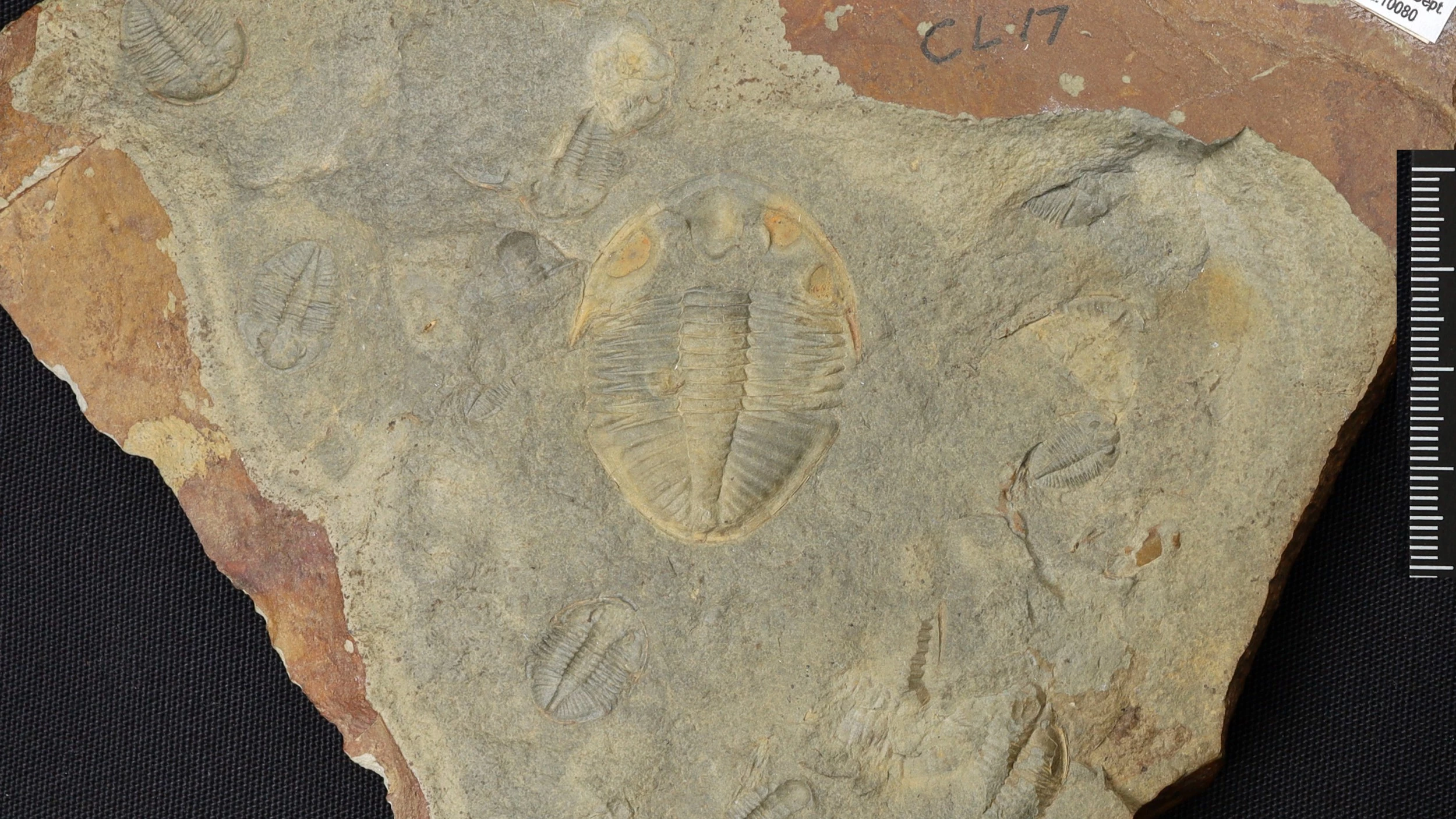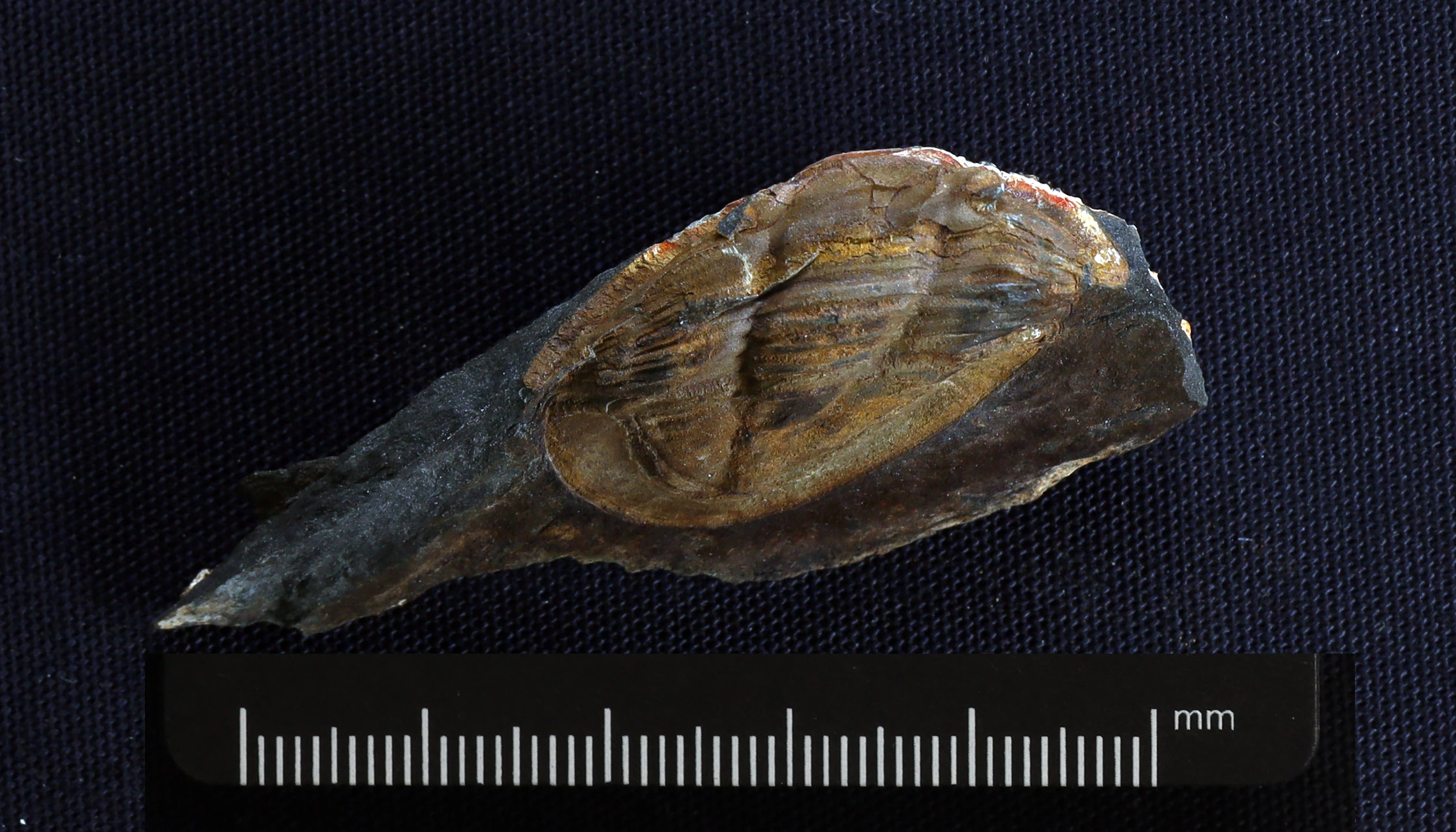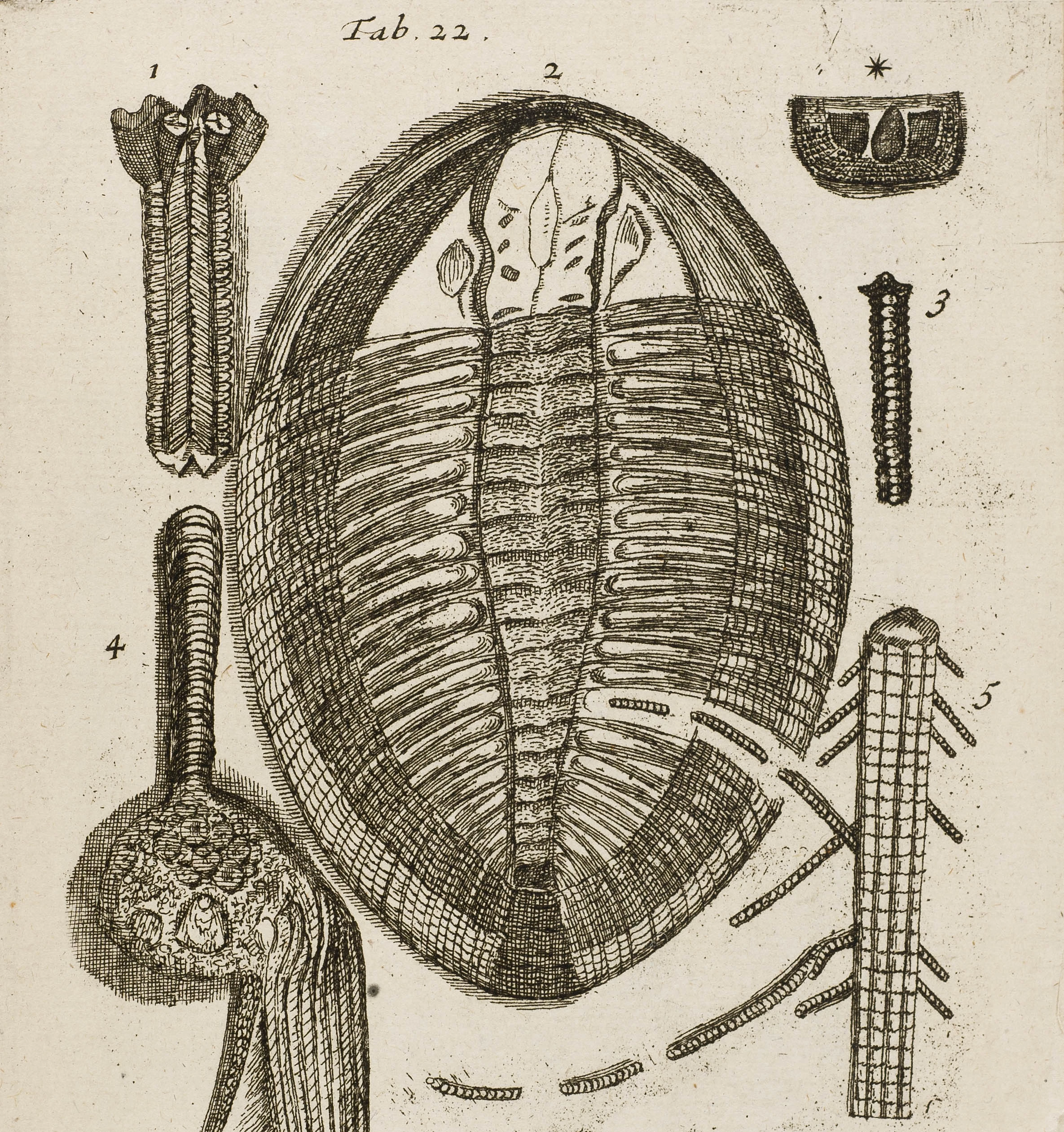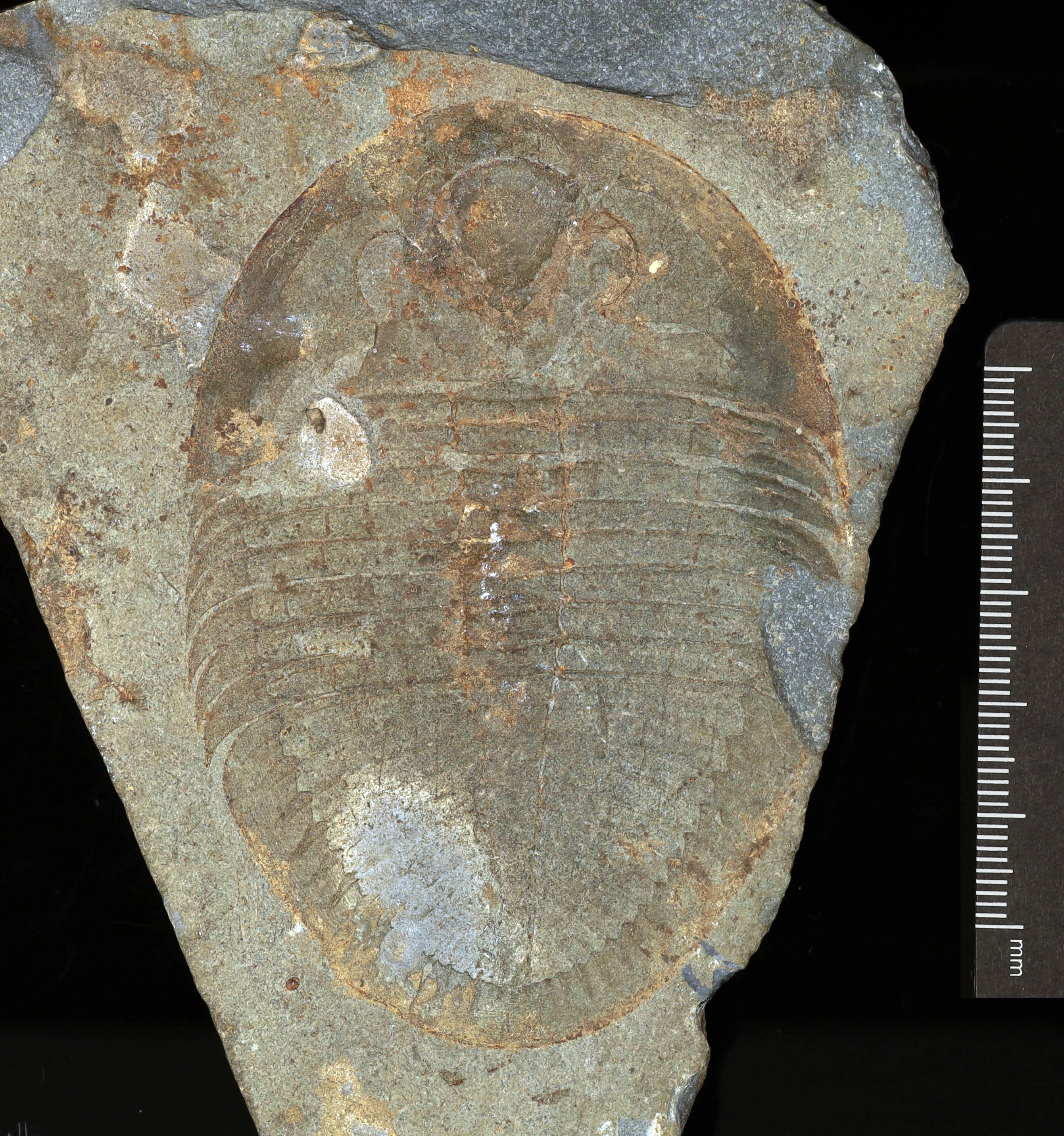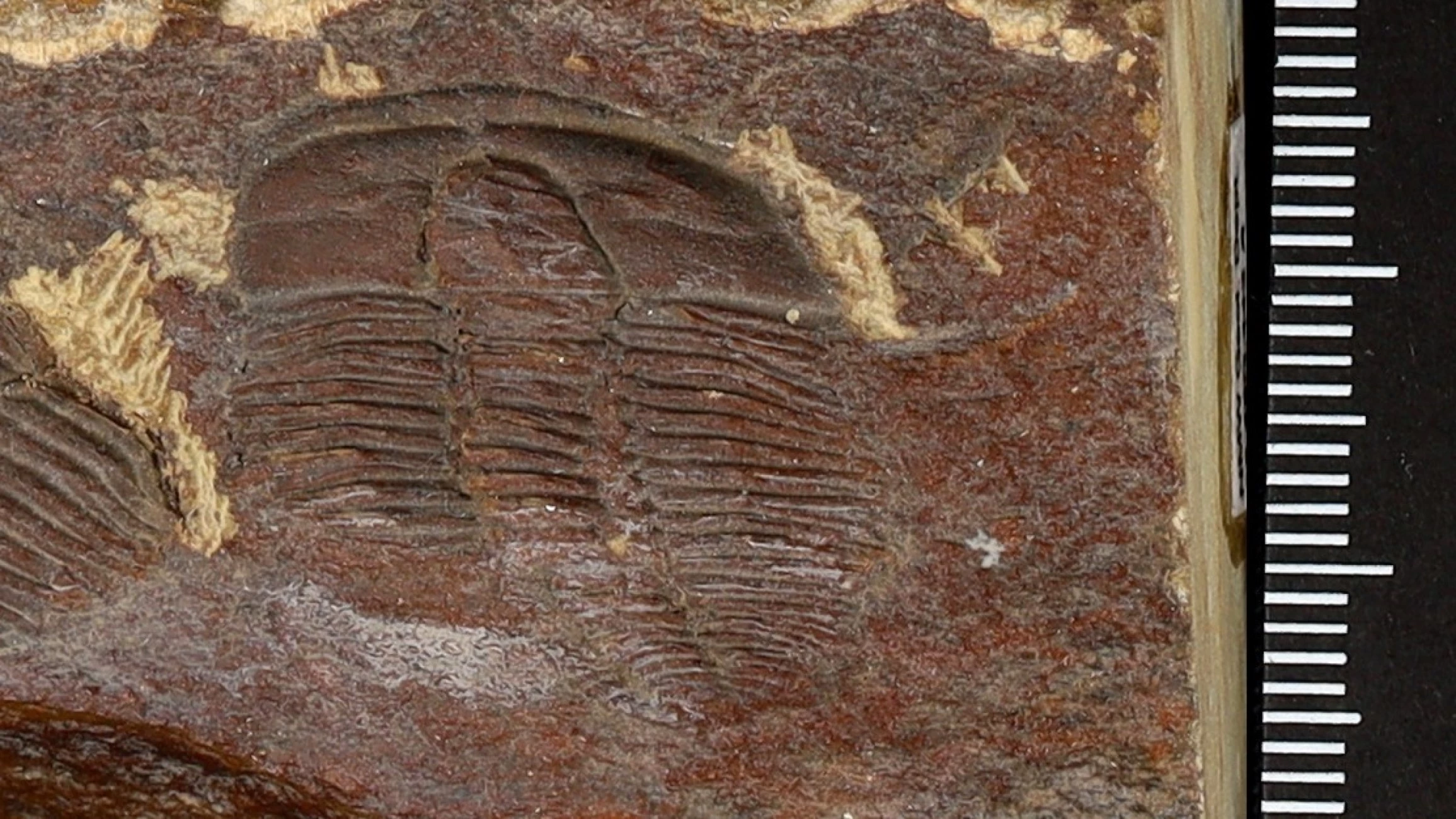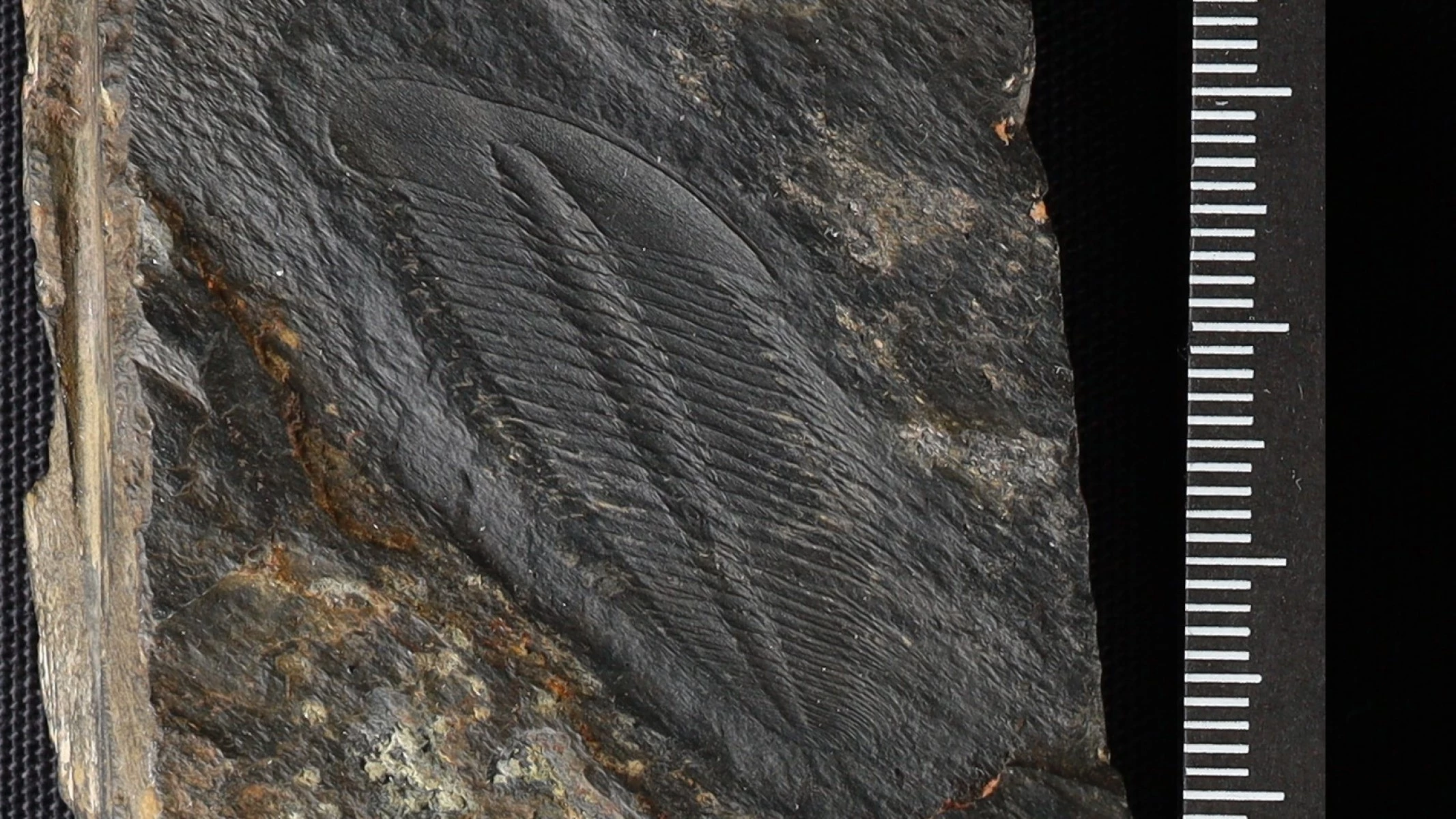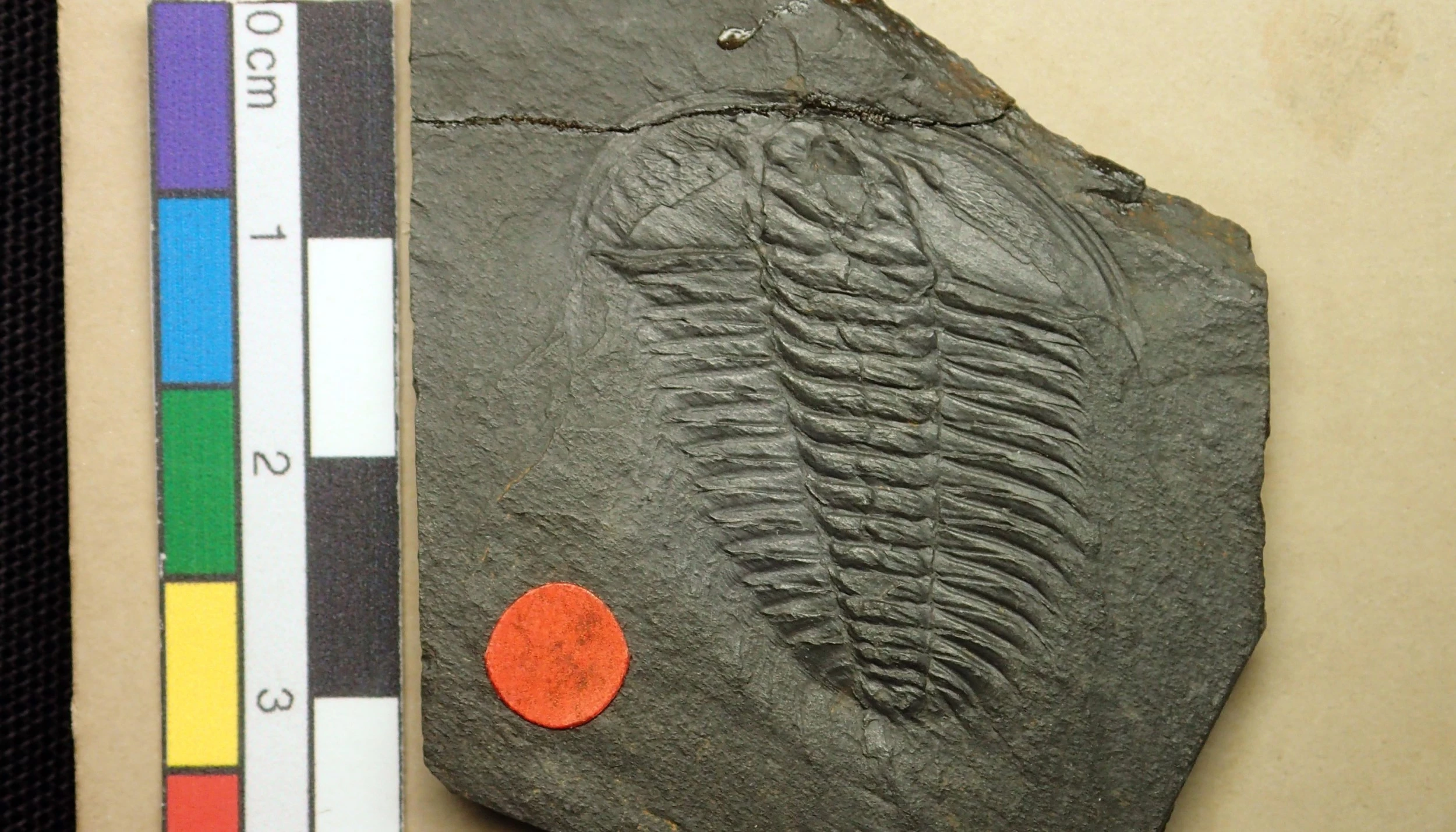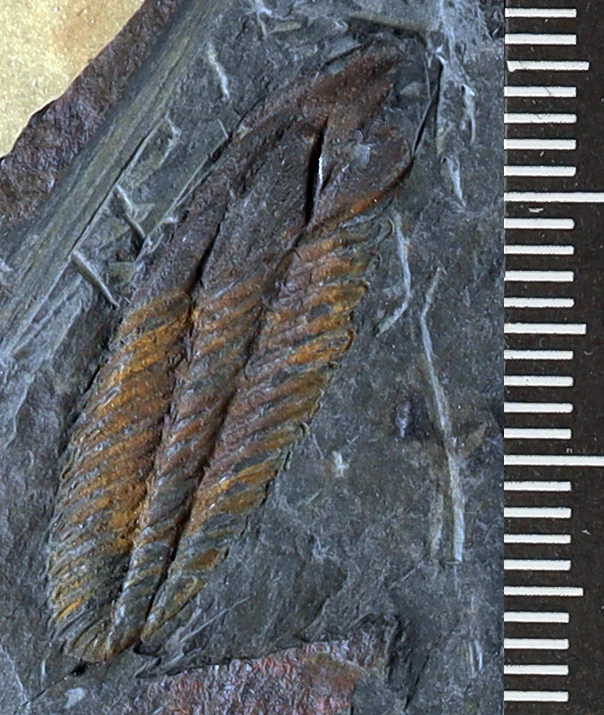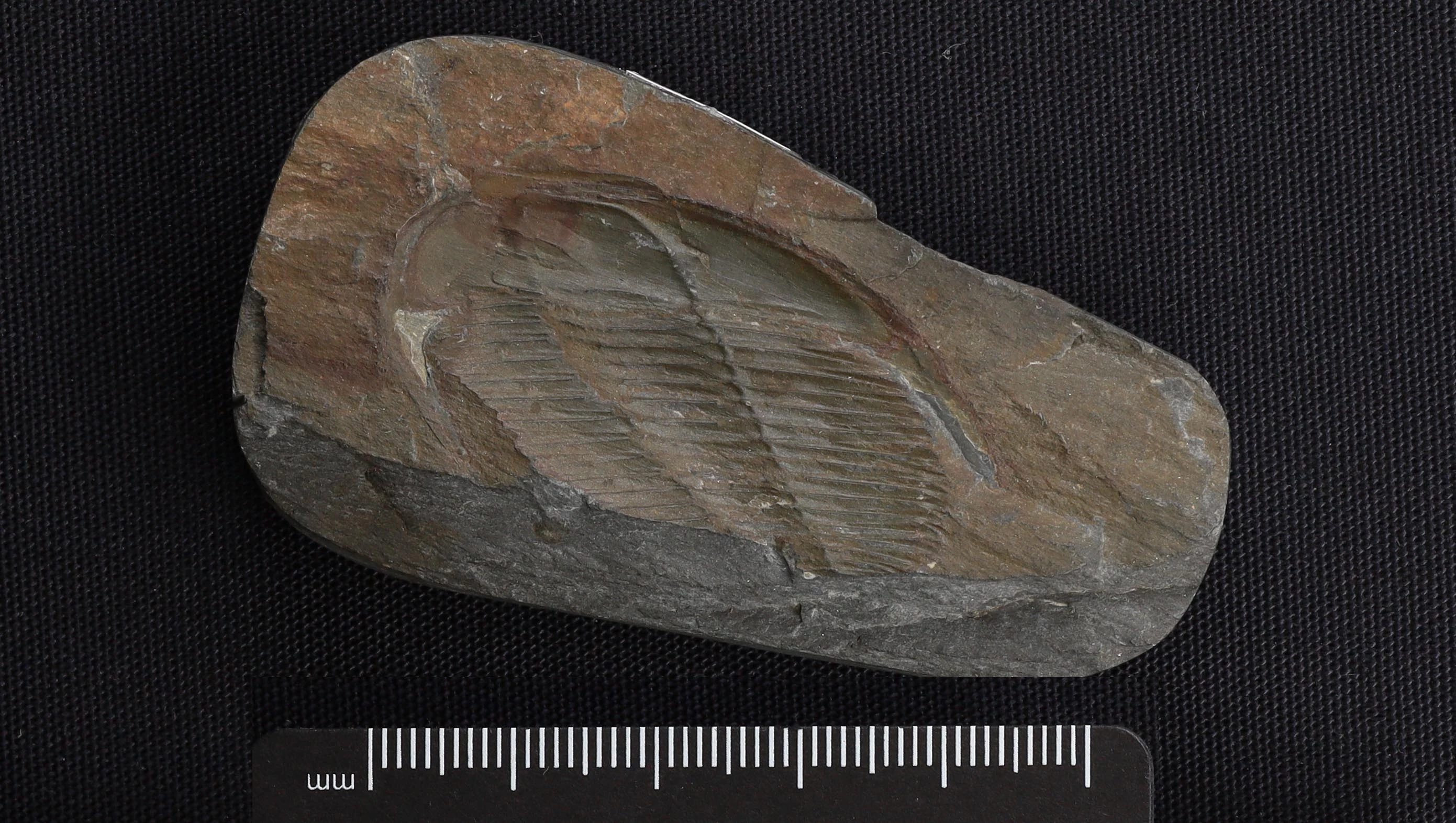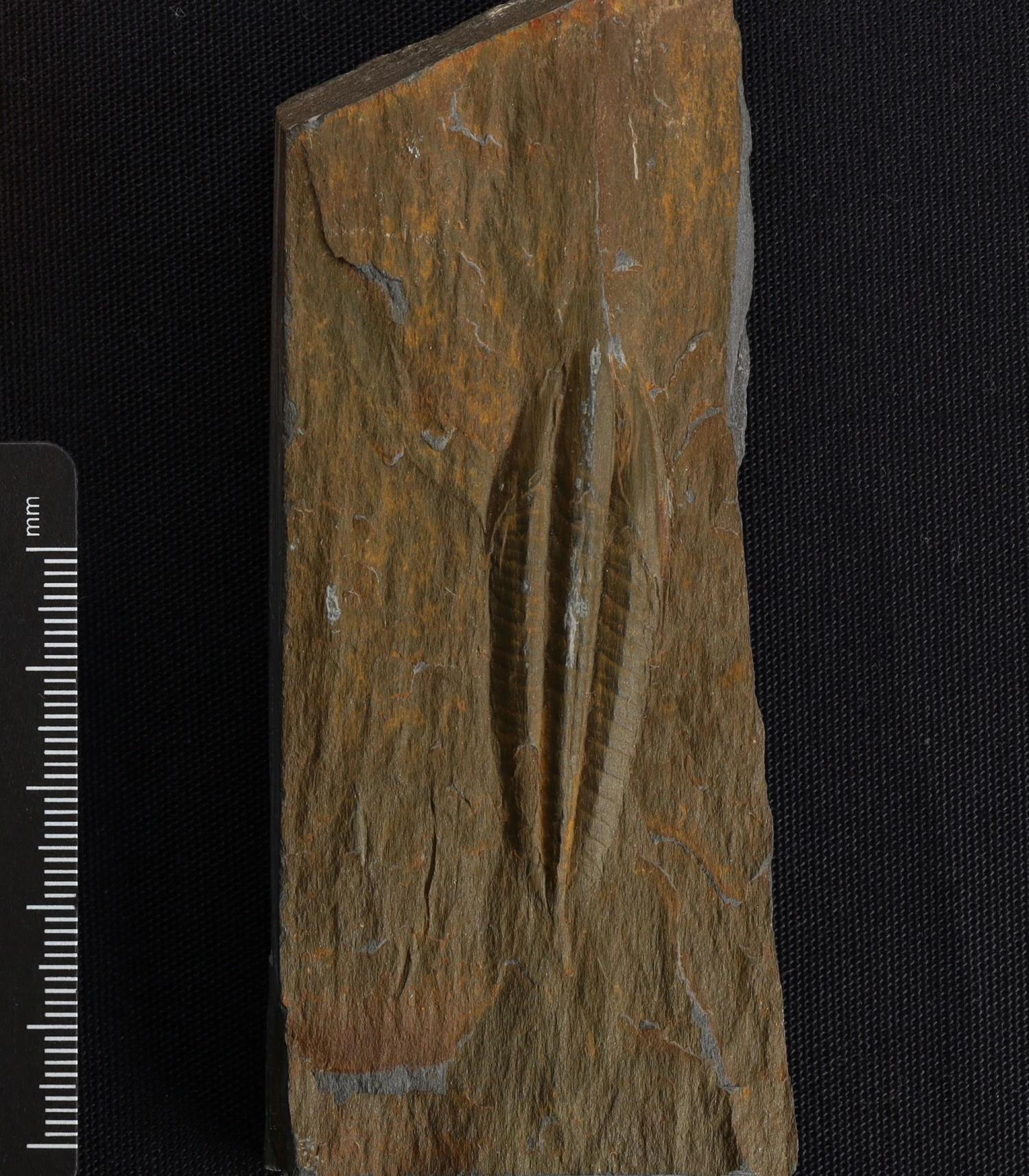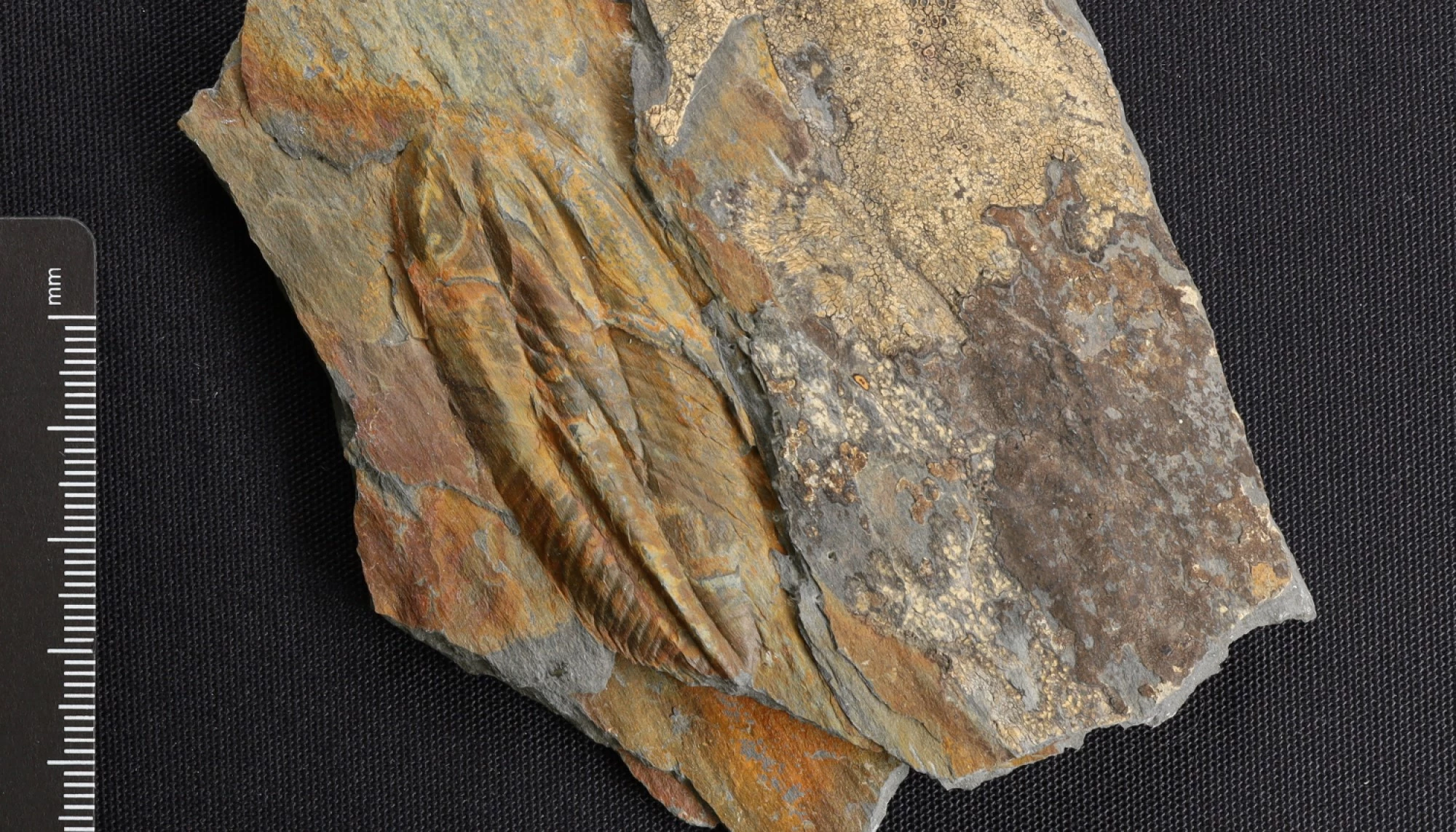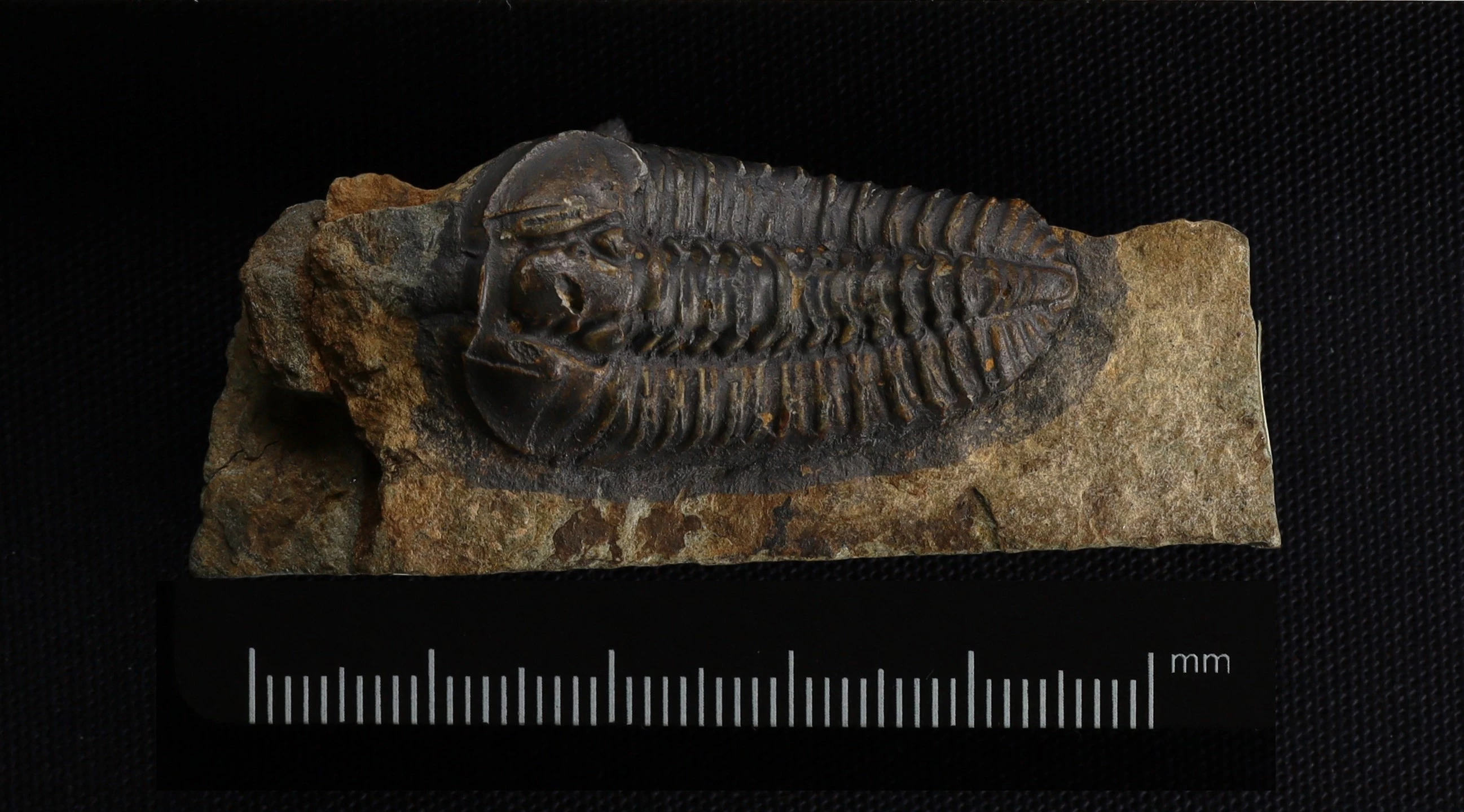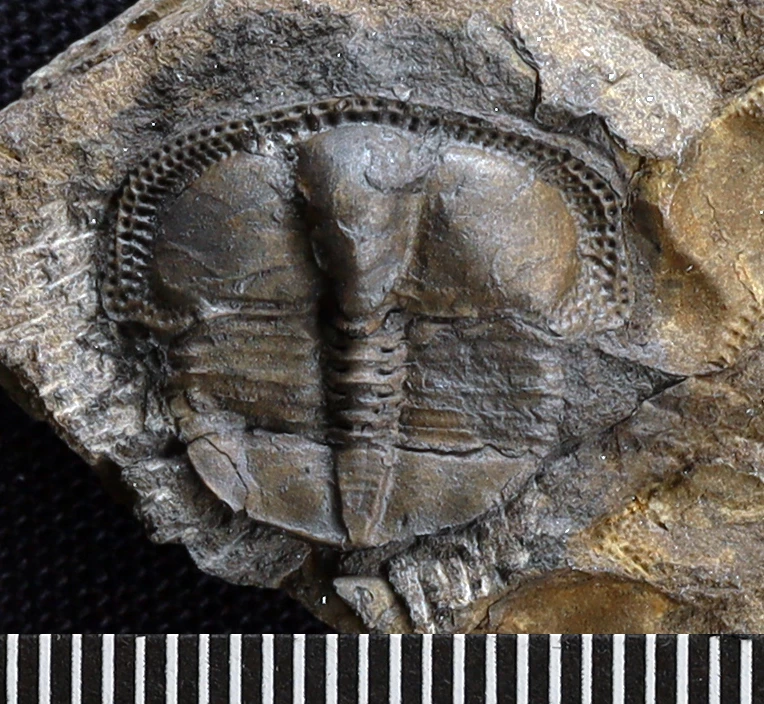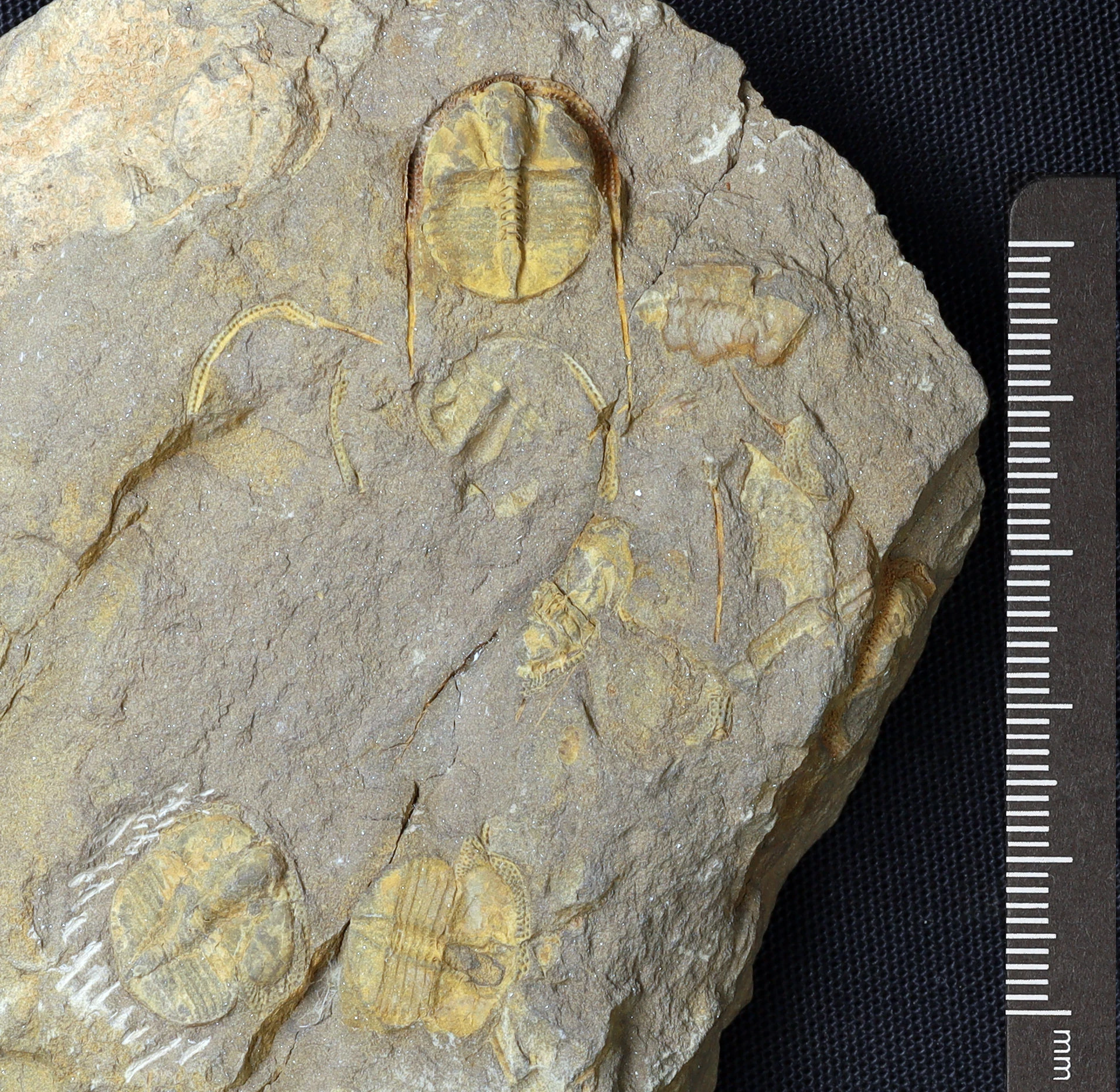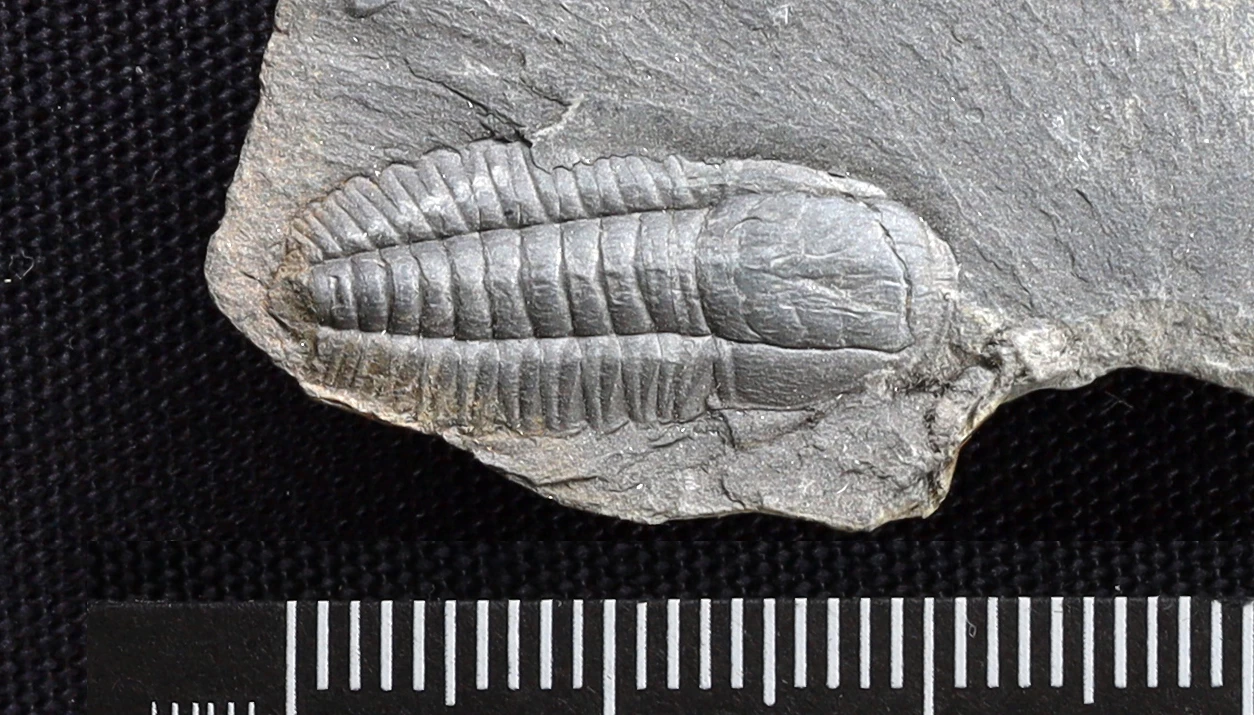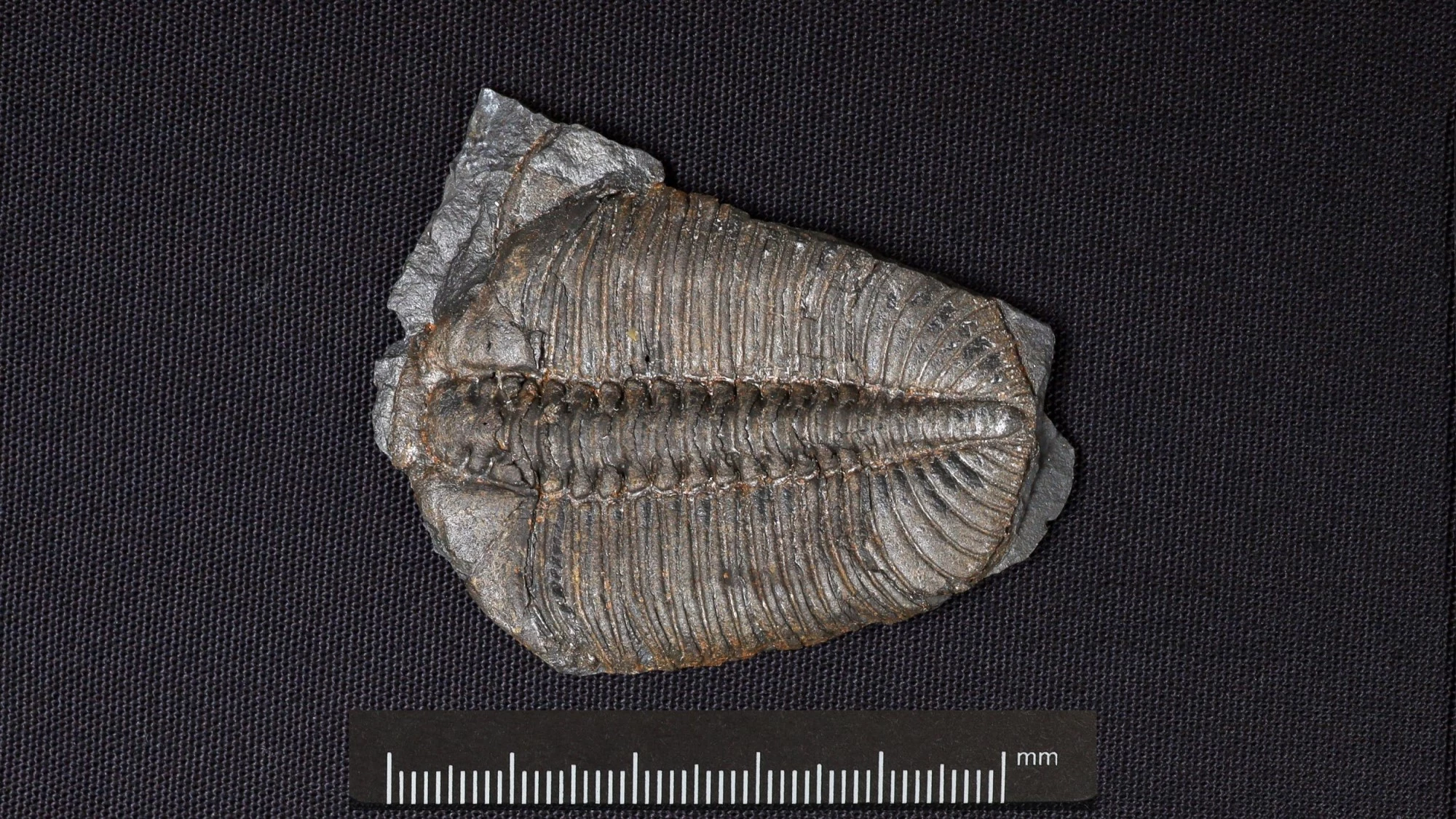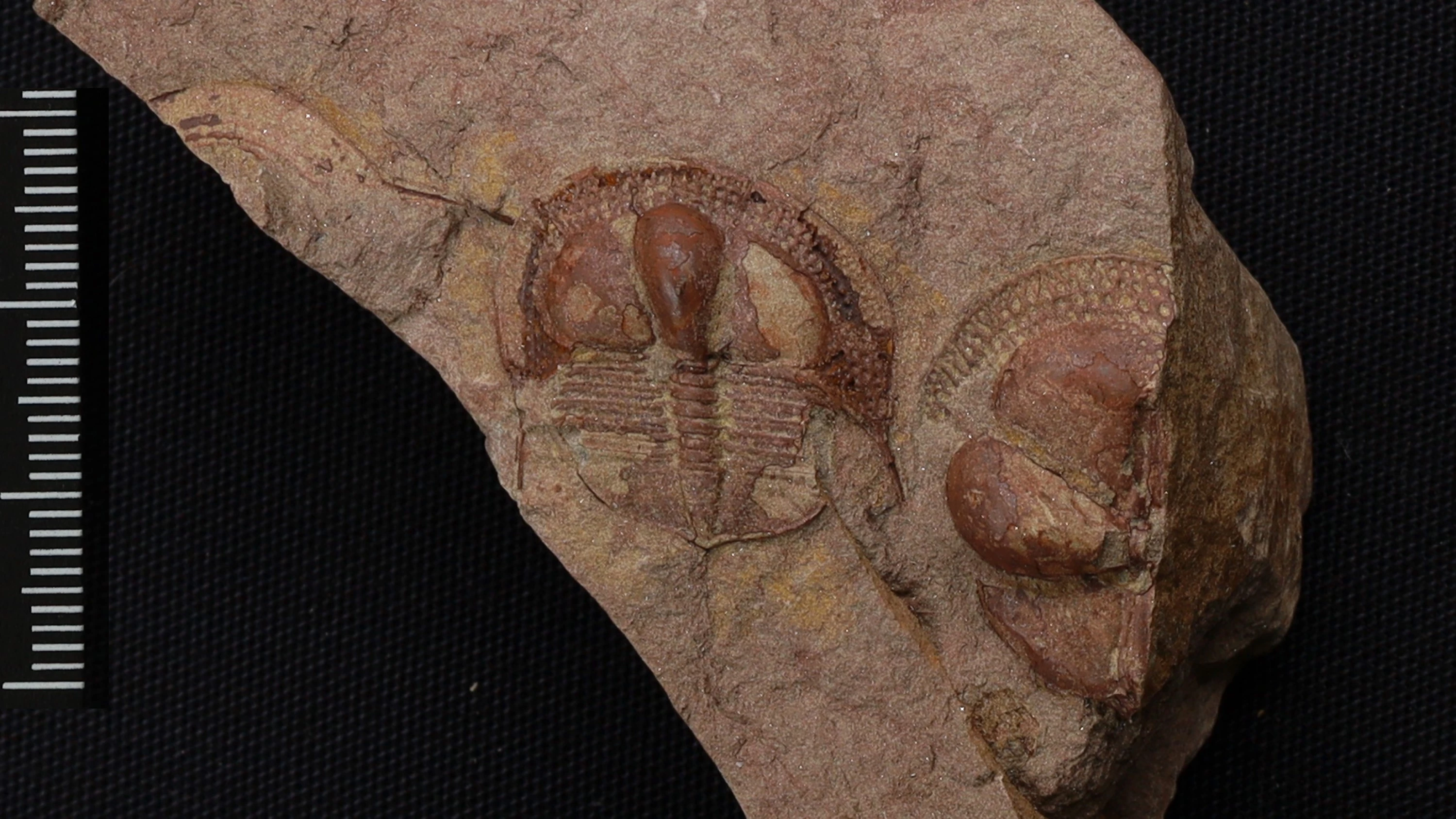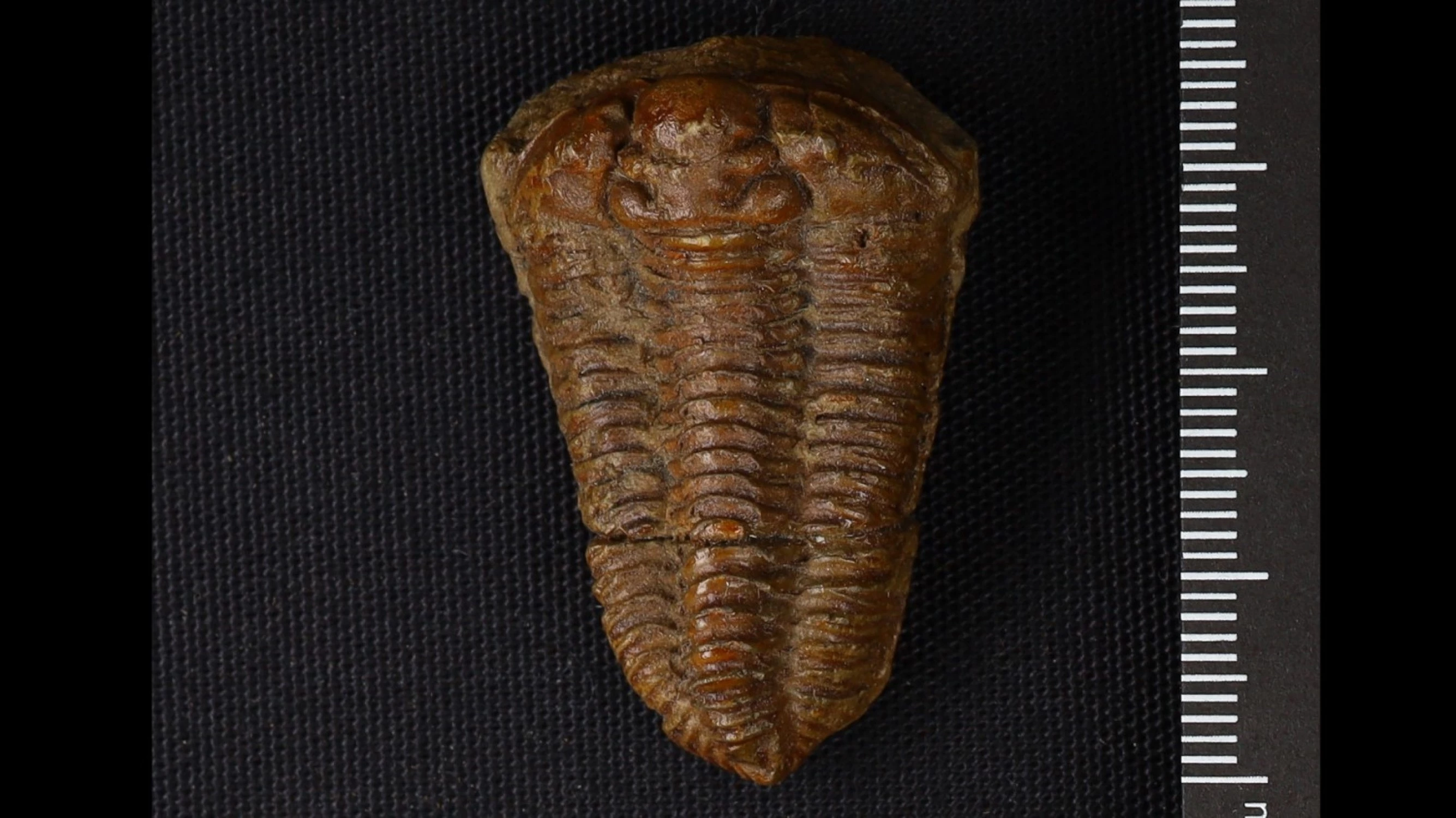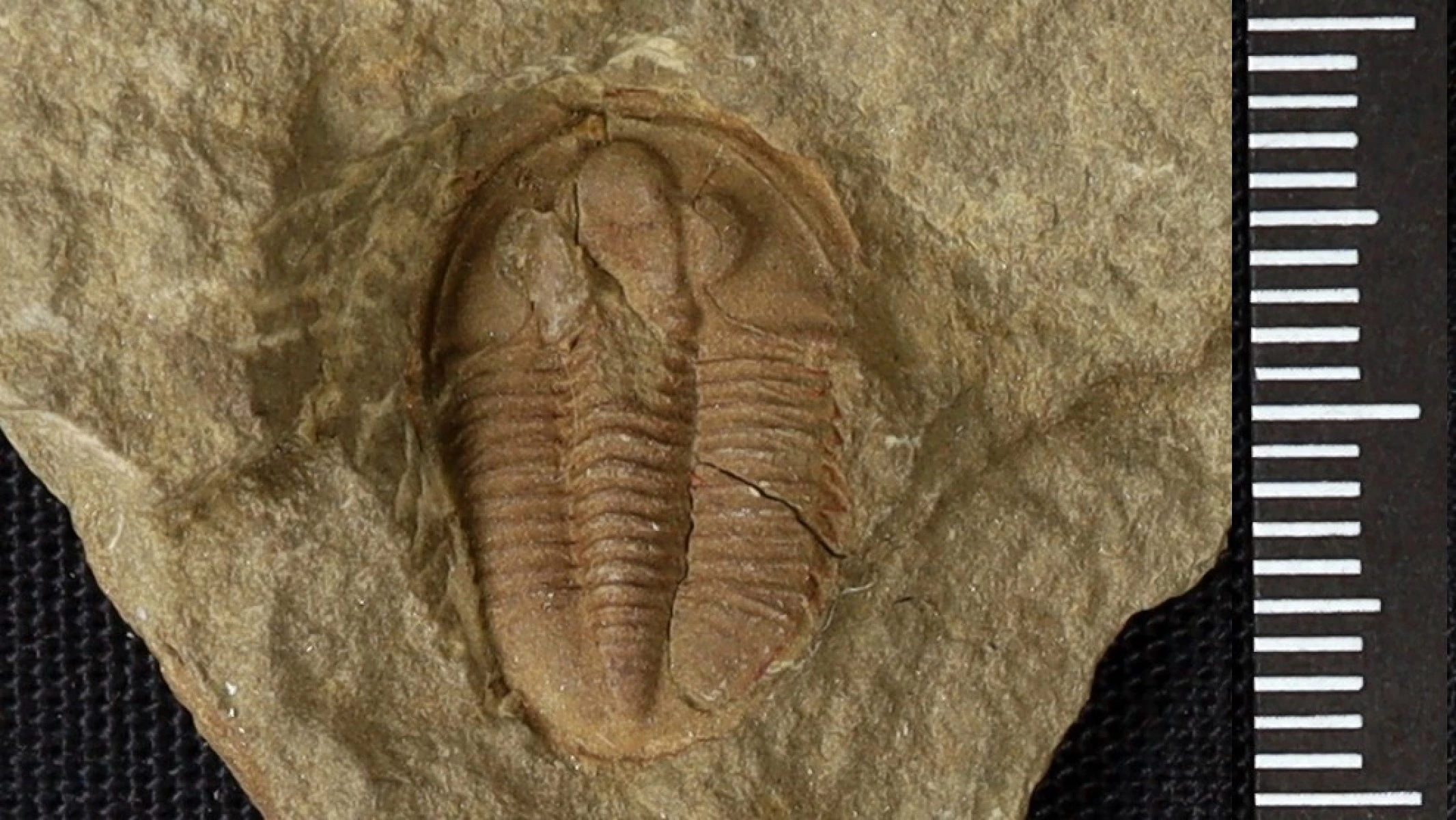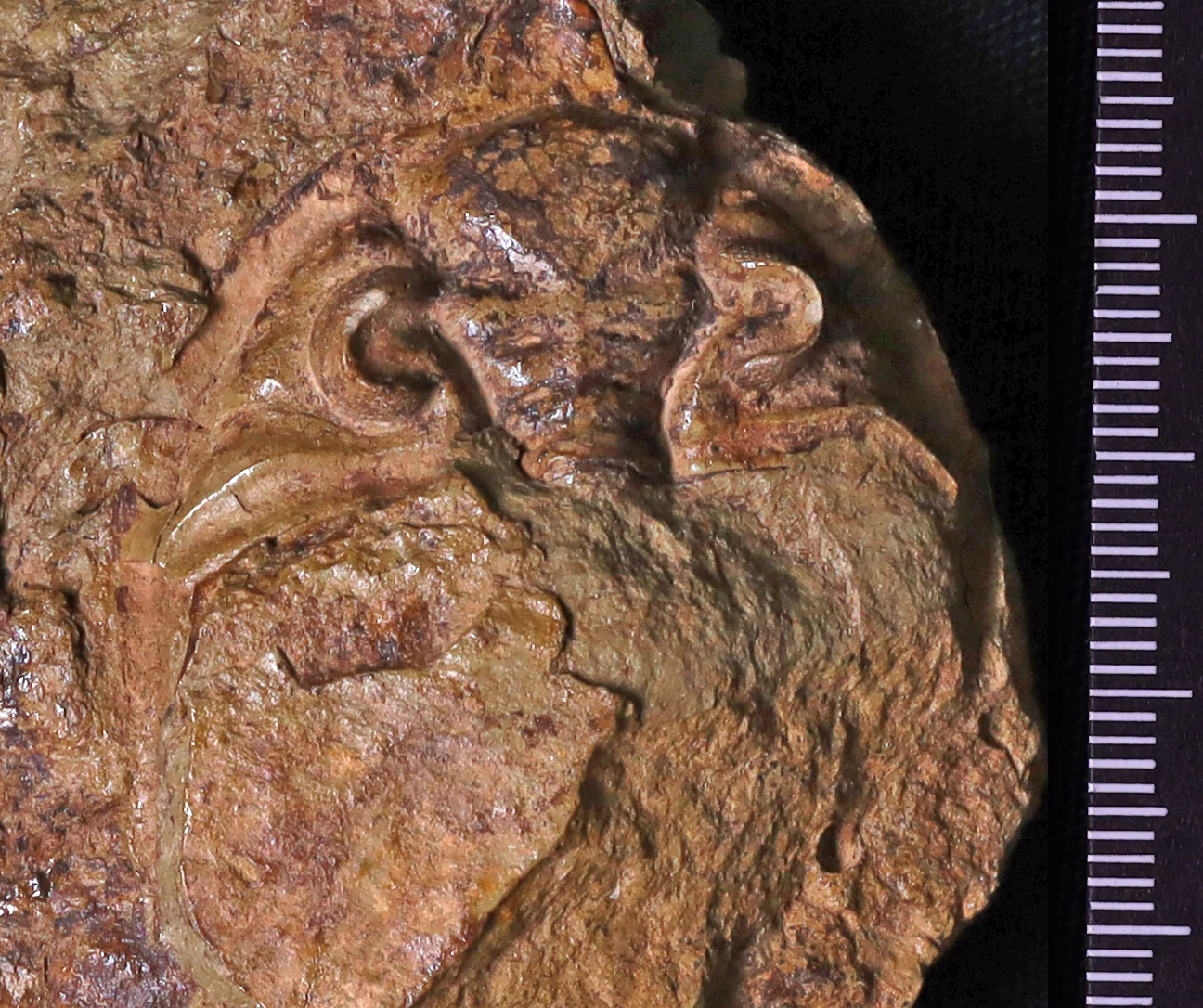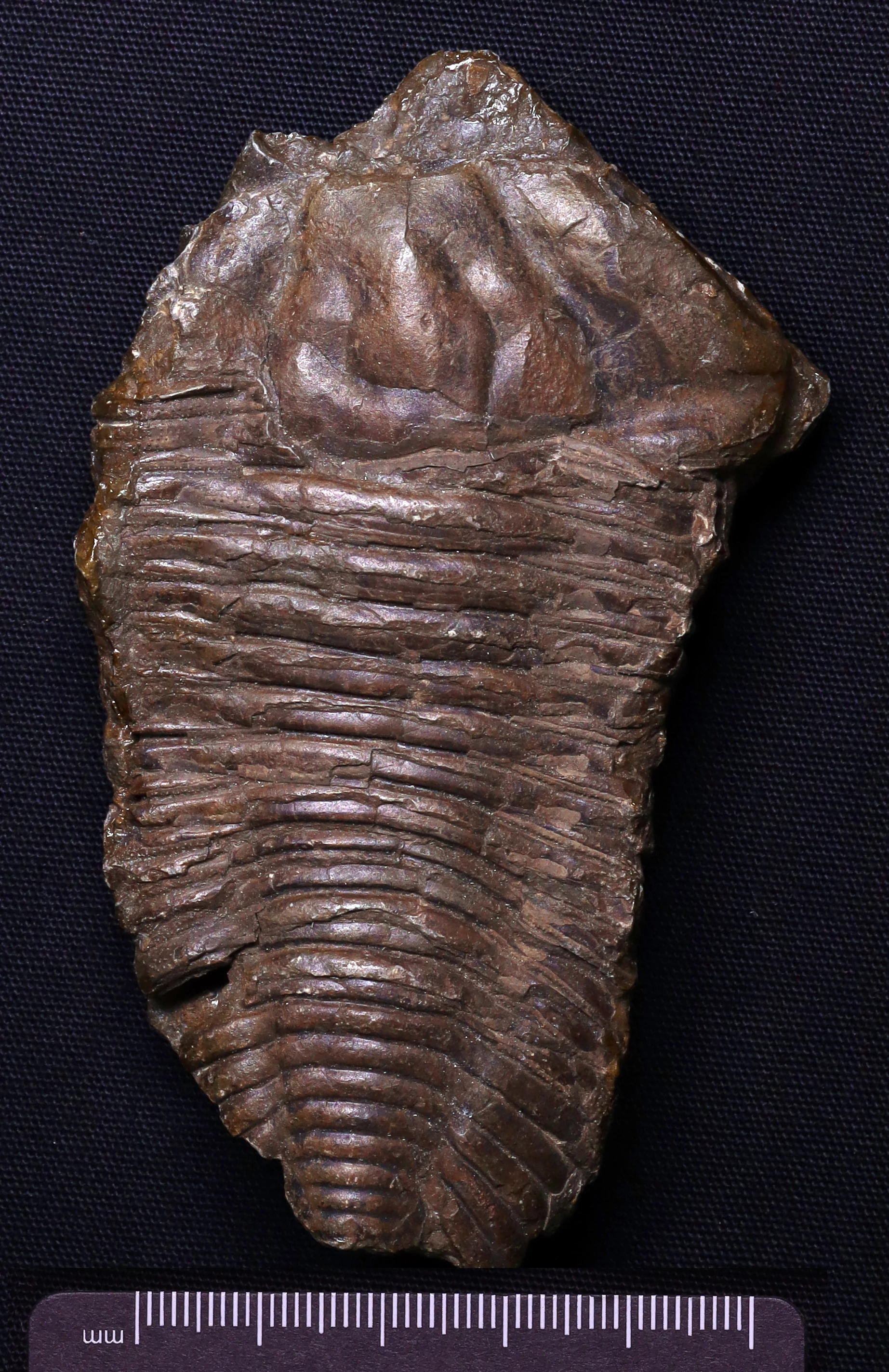Trilobites in Wales
- Trilobites are the fossils most associated with Wales, and they are found in many parts of the country.
- Trilobites are some of the oldest animal fossils known, with some being over 500 million years old.
- The first scientific drawings of trilobites were made in Wales over 300 years ago, by Welsh naturalist Edward Lhwyd in 1698
If we asked you to name a fossil from Wales, what would you think of? An ammonite, perhaps, one of those lovely spiral shells you sometimes spot on the beach? Or maybe dinosaurs are more your thing, and you’d choose Dracoraptor, the small meat-eating theropod found near Penarth a few years back?
These fossils date from the Jurassic, a time period made famous by a string of Hollywood blockbusters. But did you know that most of the rocks in Wales are much older than that? The fossils within them show us the animals and plants that lived millions of years before the dinosaurs.
Among the best known of these ancient creatures are the trilobites, whose fossils were first discovered in Wales over three hundred years ago.
What kind of animals were trilobites?
The 3 ‘lobes’ of the trilobite body, showing how they got their name. (Rorringtonia kennedyi from near Llandrindod Wells, Ordovician period.)
Niobella smithi, Porthmadog area, Ordovician period.
We often describe trilobites as looking like giant woodlice because they both have bodies with lots of segments. Although they both belong to a group of animals called ‘arthropods’, they are only very distant cousins. The name arthropod means ‘jointed leg’ because these creatures have lots of those, along with a tough outer shell or skin, known as an exoskeleton. You may not have realized it but you’re sure to have encountered a few arthropods. That includes uninvited scuttling guests such as spiders, silverfish, beetles or other insects. If you enjoy watching butterflies and bees visiting the flowers in your garden or local park, then you’ve been an arthropod fan all along. And wouldn’t you agree that one of the most exciting things you can find in a seaside rock pool is a crunchy-shelled crab armed with fearsome claws?
Trilobites are an extinct group of arthropods. They had a hard exoskeleton and jointed legs like the arthropods living today, but their bodies were built quite differently. The name trilobite comes from the fact that their bodies have three distinct ‘lobes’ or areas. The central area is raised and runs down the middle of the trilobite’s head, along the length of its body and down the centre of its tail. The two areas either side are mirror images of each other and are usually lower than the middle one, like plains either side of a mountain ridge. Their outer edges curve under slightly to make a hard rim around the trilobite’s softer underbelly.
Trilobite legs are known from only a few, very rare fossils. The legs weren’t hard like the exoskeleton that covered the entire back of the animal, so were less likely to become fossils. They had a pair of jointed legs under each body segment, with a feathery gill for breathing at the top of each leg. They also had a pair of antennae or ‘feelers’ at the front of their head.
Trilobite eyes were quite special. They had compound eyes like insects with lots of small lenses stuck together, rather than having one large lens in each eye like us. In trilobite eyes, each lens was made of a crystal of the mineral calcite. We are sometimes lucky enough to find trilobite fossils with their crystal eye lenses intact. We can study them to discover how trilobites saw their ancient world. Trilobite eyes are the oldest complex eyes that we know of in the history of life.
How long ago did trilobites live?
Trilobites are among the oldest fossil animals known. The oldest trilobite fossils were found in Spain, Morocco, Russia and USA, and are around 521 million years old. Because a lot of the oldest rocks in Wales were squashed and heated, the oldest trilobites we find here aren’t quite so old – around 514 million years. Trilobites appeared early in a time we call the Cambrian period, when lots of shelly animals were found as fossils for the first time. This is known as the ‘Cambrian explosion’, because a great variety of different life forms suddenly appeared in the fossil record for the first time. This huge diversity of life just seemed to ‘explode’ into existence from nowhere, although it is likely that fossils of the animals that lived before just don’t exist because they had entirely soft bodies.
Trilobites were a very successful group of animals, which were around for about 270 million years. They died out at the end of the Permian period around 252 million years ago, in the biggest mass extinction event that has ever happened on Earth. However, trilobite numbers had already been falling for some time before this point. Only a few species belonging to one major group were still around when they were finally wiped out in ‘the big dying’, along with over 80% of all species living in the sea at that time!
Where did trilobites live and what did they eat?
Olenus’ wide body segments may have housed large gills, to help it survive in the stagnant deep sea.
Free swimming trilobites like Sagavia had large eyes to allow them see all around.
All trilobites lived in the sea, but in a variety of different places and in different ways. Many lived on the sea bed, crawling over or burrowing into it. Others lived among ancient reefs made by corals and other sea creatures. Some were predators, hunting other animals, others lived by scavenging scraps of food and waste, or by filtering food out of the water.
While most trilobites lived in relatively shallow water, some were adapted to living at the bottom of deeper oceans. Olenus fossils from North Wales had wide body segments. We think these housed large gills allowing it to survive in deep water where there wasn’t much oxygen. Some palaeontologists even suggest that the gills may have been home to bacteria, which could live on sulphur and provide the trilobites with an alternative source of energy that didn’t need oxygen.
Some trilobites were adapted to swim freely above the sea floor in the open water. For others their way of life is still unknown, like the tiny pea-sized trilobites called agnostids. It’s possible that they floated in the open ocean, lived attached to seaweed, or lived as parasites on larger animals.
How many different kinds of trilobites were there?
The smallest trilobites in Wales include agnostids like Peronopsis from Pembrokeshire.
Paradoxides from Pembrokeshire, the largest trilobite known from the UK
Free-swimming Degamella had a narrow, streamlined body and large eyes
Trinucleus, the first named trinucleid trilobite, a very common group in Wales.
Eyeless Cnemidopyge likely used its long spine to sense its surroundings and stay in touch with other trilobites.
‘Strawberry headed’ trilobite Encrinurus was covered in bumps.
Stygina’s smooth exoskeleton would have reduced drag.
Trilobites evolved into a great variety of different types – over 22,000 species are known from their long history and new species are discovered every year. The average trilobite is around 2-10 cm long, but they came in a much larger range of sizes. The smallest we find in Wales include Peronopsis and Shumardia at less than a centimetre long, and the largest known from the British Isles is the giant Paradoxides at around 50 cm long. The largest complete trilobite found worldwide is the 70 cm long Isotelus rex from Canada, and fragments of a trilobite that may have exceeded 80 cm have been found in Portugal.
Trilobite bodies had lots of different features to adapt them to their varied lifestyles. Swimming trilobites like Degamella had narrow, streamlined bodies and huge eyes that allowed them to see all around. Other trilobites had eyes on the end of stalks and may have lived partly buried in the sea bed. Some had very small eyes or none at all, and likely lived down in the dark depths.
One very common group of trilobites found in Wales is the trinucleids, which had a very unusual looking head. Trinucleids had a wide sun visor-like brim around a semi-circular head, with rows of holes in it like a sieve. This sieve-like fringe was likely used to filter food out of the water.
Spines are common on trilobites and would’ve been useful in lots of ways. Those sticking out around the edges would make predators think twice and would also act like a snow shoe, spreading the weight of the trilobite making it less likely to sink into soft mud. Some blind trilobites like Cnemidopyge had a single long spine sticking out the front of their head which they likely used to sense their surroundings. Intriguing fossils from Morocco show ‘conga lines’ of similar, related trilobites (Ampyx ), using their spines to keep in touch with each other as they moved together across the sea bed. Other trilobites were as prickly as hedgehogs – did these spines simply keep hungry predators at bay or could they also have been used to display to other trilobites?
The exoskeletons of many trilobites were covered with bumps or ridges. Perhaps some of these had uses – for camouflage, sensing their environment, controlling water flow, making it easier to dig – or maybe some of them were for display. The bodies of other trilobites were smooth, making it easier to swim or burrow.
How did trilobites grow up and get bigger?
Llechfaen o gyffiniau Llanfair-ym-Muallt â nifer o Ogyginus o wahanol feintiau (ac oedrannau).
From some very small fossils, we know what trilobite babies looked like. They started off life as a larval form that looked very different from the adults, like insects and crabs do today. Then they grew through several more stages, becoming more and more like adult trilobites at each stage. Once adults, they continued to grow bigger.
Like all arthropods, trilobites had to moult to allow them to grow, which they did several times throughout their lives. They grew a new exoskeleton underneath the old one, which they then broke open and threw away. They took in water to expand the new larger one to its full size and let it harden. This is similar to how crabs moult and grow today. One reason why we find so many trilobites is that each animal moulted several exoskeletons during its lifetime, each one being a potential future fossil.
In mid Wales, we can find lots of different sizes (and ages) of some of the more common trilobites, including Ogyginus corndensis.
When were the first trilobites found in Wales?
In the past, people believed the tails of trilobite Merlinia were butterflies turned to stone by a magic sprite.
The first scientific drawing of a trilobite, Dr Edward Lwyd’s ‘flatfish’ (1698), now known to be Ogygiocarella debuchii.
The first scientific drawing of a trilobite, Dr Edward Lwyd’s ‘flatfish’ (1698), now known to be Ogygiocarella debuchii.
No doubt people in Wales first noticed trilobites and other fossils centuries ago, although they probably didn’t realise that they were the remains of once living things. They made up stories about the strange shapes they saw in the rock. One such tale was told in the Carmarthen area to explain trilobite tails found in the rocks, which local people thought were butterflies that had turned to stone! The legend goes that the magician Merlin fell in love with a fair sprite, but sadly she did not feel the same way. One day, Merlin was in a cave and the sprite cast a spell to trap him there forever. Some butterflies that were fluttering around got caught up in the magic and were frozen in the rock for all time. Scientists used this story when giving the trilobites their scientific name, Merlinia.
Cymru has a long history of studying trilobites. The first ever scientific illustrations of these fossils were drawn by Edward Lhwyd, a Welshman well-known for studying natural history, archaeology and Celtic languages. Lhwyd worked at the Ashmolean Museum in Oxford and travelled around Wales gathering information for a book about its natural history. His letters about his travels in 1698 included drawings of some trilobites he found near Llandeilo in Carmarthenshire, which were published in a scientific journal later that year. He described the largest of these as the ‘sceleton of some flat fish ’ because that was the living creature it most reminded him of, and he had no idea that animals could become extinct. We can tell from Lhwyd’s clear drawing that this was in fact a very common Welsh trilobite now known as Ogygiocarella debuchii. A second type of trilobite illustrated by Lhwyd was labelled ‘Trinucleum’. This is clearly one of the distinctive trinucleid trilobites with a sieve-like fringe. A piece of a third trilobite he drew has since been identified as one known as Atractopyge.
In the three centuries since Lhwyd made those first drawings of trilobites, we have learnt that they were arthropods rather than fishes, and dozens of different species have been found in Welsh rocks. But perhaps none of these discoveries has been more exciting than when J. W. Salter found a giant trilobite in Pembrokeshire over 150 years ago. Salter worked for the Geological Survey and visited lots of places for his work looking for fossils. In 1862, he was in a boat off Pembrokeshire, aiming to land at Solva, near St Davids. By good luck, he landed at Porth-y-rhaw by mistake, an inlet a mile to the west. In the rocks there he found fossils of a very large trilobite. Salter named his new discovery Paradoxides davidis and it is the biggest trilobite known from the British Isles, around half a metre long.
Where in Wales can we find trilobites?
Some Cambrian trilobites from Wales: Bailiella from Pembrokeshire.
Meneviella from Gwynedd
Parabolina from Gwynedd
Solenopleura from Gwynedd
Most of the rocks beneath Wales’ rugged landscape are very old. Just the job when we want to look for fossils of trilobites, some of the oldest animals known. Most trilobites in Wales come from rocks from the Cambrian, Ordovician and Silurian periods, which between them make up large parts of the country. These are the three oldest periods of geological time from which we find recognisable fossils. The Cambrian (485-540 million years ago) was named after the Roman name for Wales, Cambria. The Ordovician (444-485 million years ago) and Silurian (419-444 million years ago) were named after ancient Welsh tribes, the Ordovices and the Silures.
Three Ordovician Angelina trilobites from North Wales, which look quite different from each other due to their bodies being compressed by forces coming from different directions.
Three Ordovician Angelina trilobites from North Wales, which look quite different from each other due to their bodies being compressed by forces coming from different directions.
Three Ordovician Angelina trilobites from North Wales, which look quite different from each other due to their bodies being compressed by forces coming from different directions.
The oldest trilobites in Wales come from Cambrian rocks in Snowdonia and were discovered in the Penrhyn slate quarries in the 1880s. Slightly younger Cambrian trilobites are found south of Maentwrog in Eryri (Snowdonia), on the Llŷn Peninsula, in the St David’s area of Pembrokeshire and in the Mawddach Valley near Dolgellau.
Some Ordovician trilobites from Wales: Gravicalymene from Denbighshire,
Some Ordovician trilobites from Wales: Lloydolithus from Carmarthenshire
Some Ordovician trilobites from Wales: Marrolithoides from Carmarthenshire
Some Ordovician trilobites from Wales: Porterfieldia from Carmarthenshire
Some Ordovician trilobites from Wales: Platycalymene from Powys.
Some Ordovician trilobites from Wales: Salterolithus from Powys.
Mid Wales is famous for Ordovician trilobites, although a lot of the best known collecting localities are on privately owned land. ‘Trilobite Dingle’, near Welshpool, was informally named by 19th century geologist Roderick Murchison in honour of the plentiful fossils found there and is now a protected site (SSSI). Many trilobites from this period have also been found in west Wales, particularly in the areas around Haverfordwest and Carmarthen, in Eryri (a few even from the summit of Yr Wyddfa!), on the Llŷn Peninsula and near Corwen in the north-east.
Some Silurian trilobites from Wales: Calymene from Penylan Quarry,
Some Silurian trilobites from Wales: Proetus from Monmouthshire
Some Silurian trilobites from Wales: Dalmanites from Gwent.
Some Silurian trilobites from Wales: Trimerus from Gwent.
In the past, Penylan quarry in Cardiff was well known for its fantastic Silurian fossils, including complete examples of trilobites such as Encrinurus. Sadly, the site became partly inaccessible when a major road was built, although the remainder of the site is now protected. Silurian trilobites have also been found in lots of other parts of Wales, including in the Haverfordwest and Llandovery areas of west Wales, in Powys around Meifod, Old Radnor and Builth Wells, near Llanystumdwy on the Llŷn Peninsula, and near Usk in Monmouthshire.
The youngest trilobites found in Wales date from the Carboniferous period, around 350 million years ago, and are found rarely on the Gower and Pembrokeshire coasts, in the Merthyr Tydfil area, and near Llangollen. Carboniferous trilobites are also found on the north coast, among the remains of ancient reefs in areas such as Llandudno and Prestatyn.
